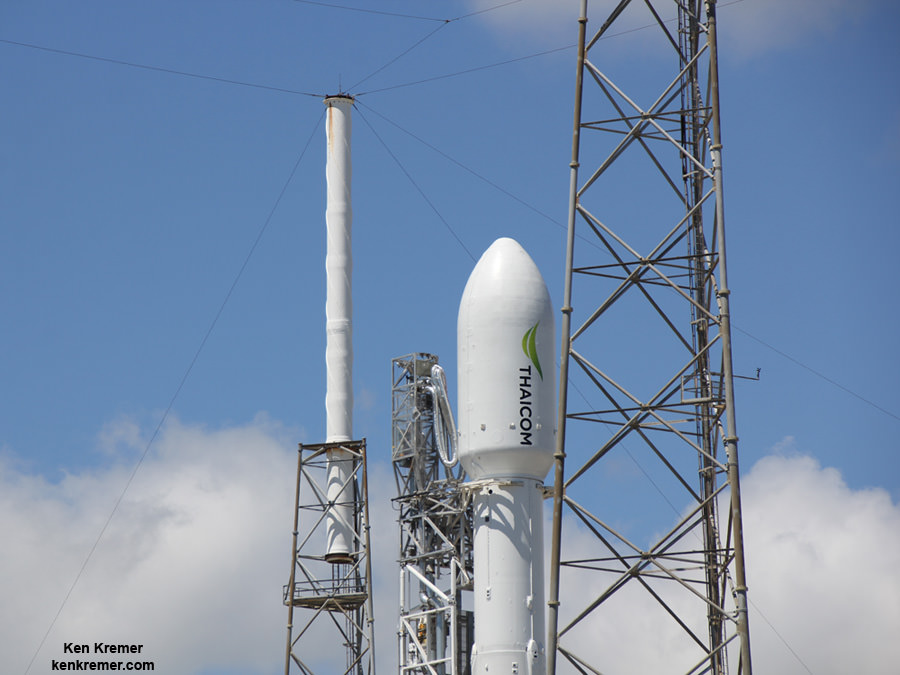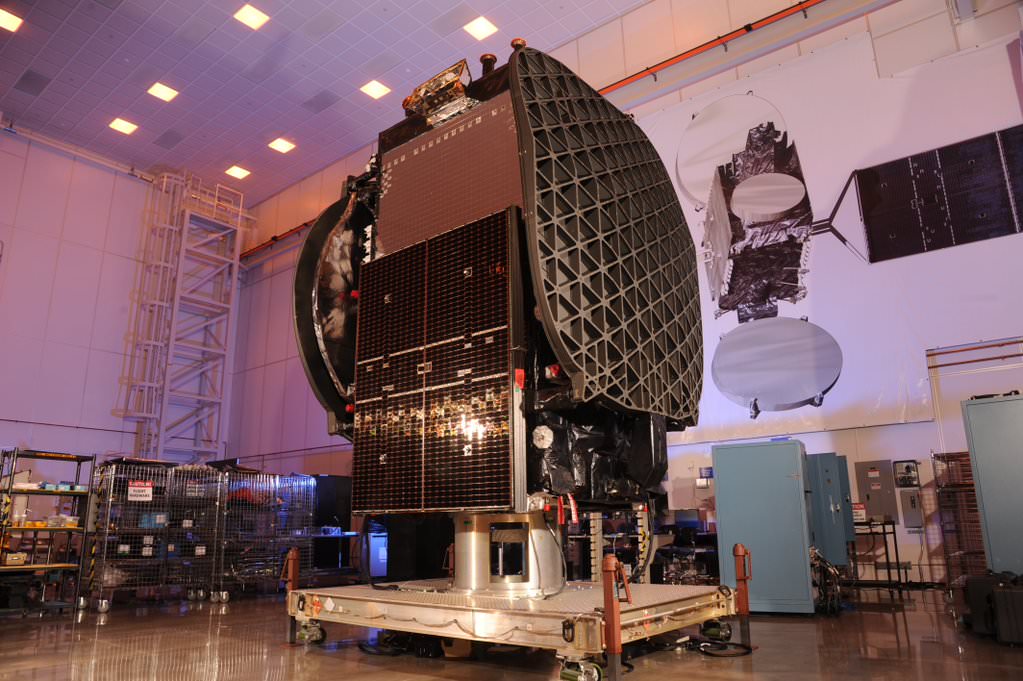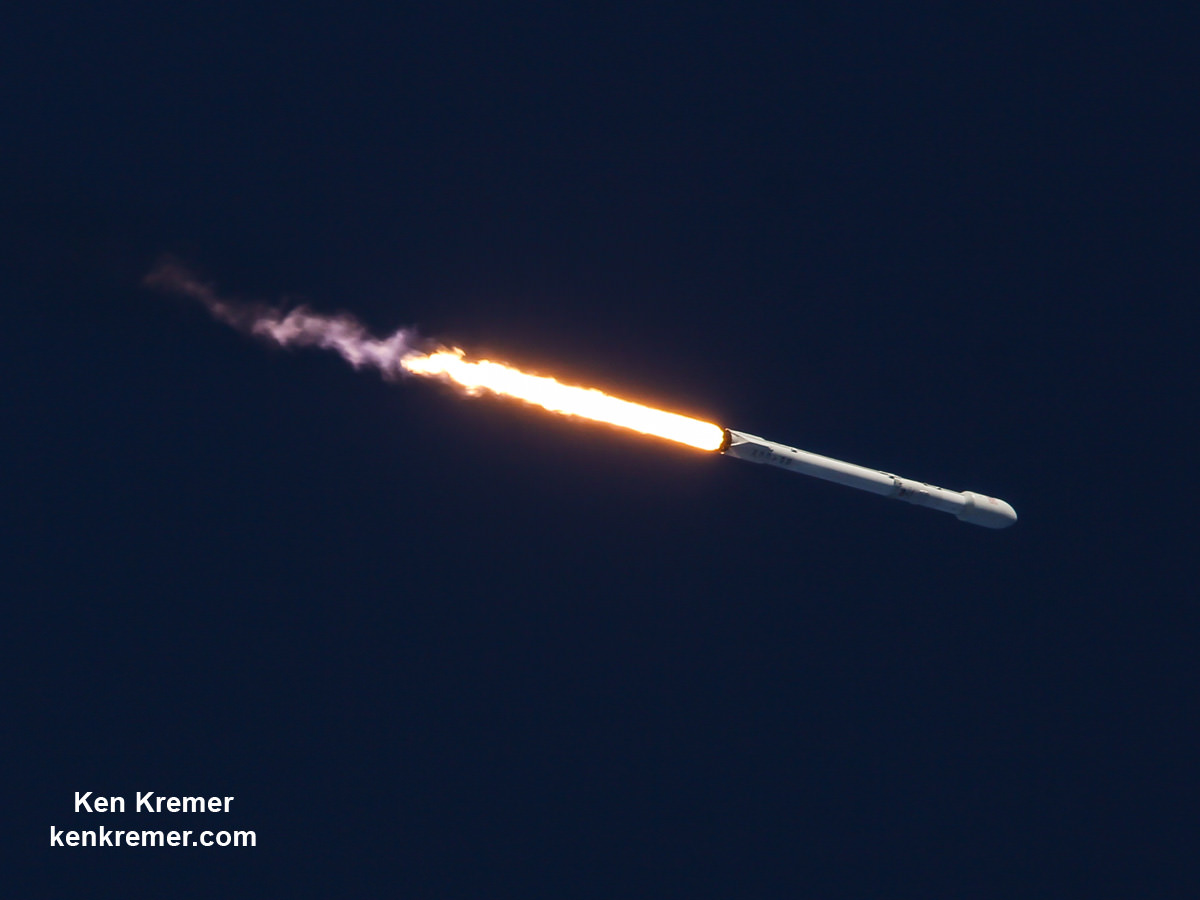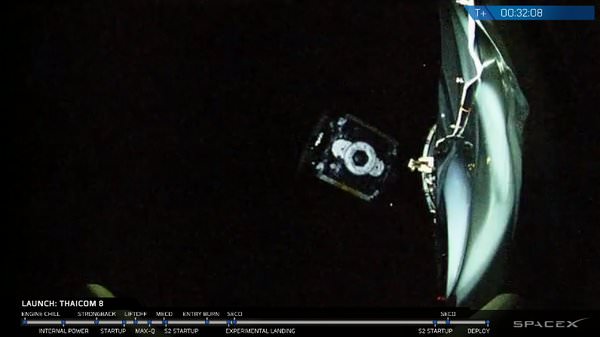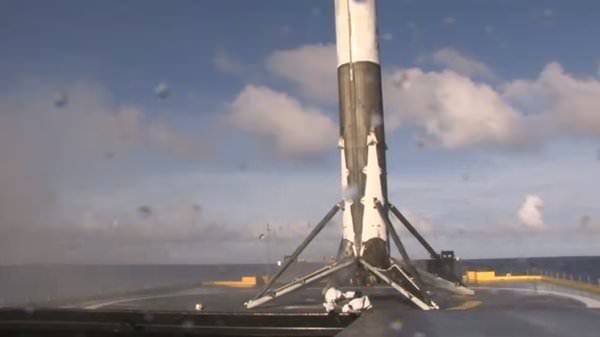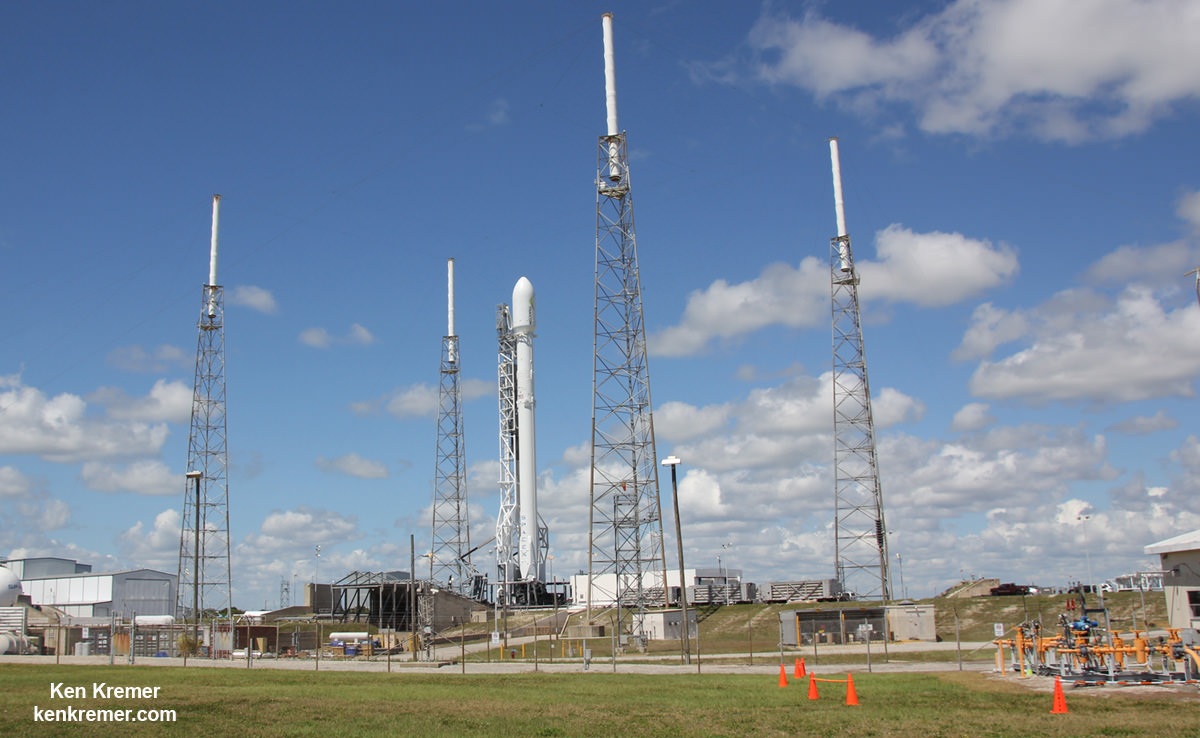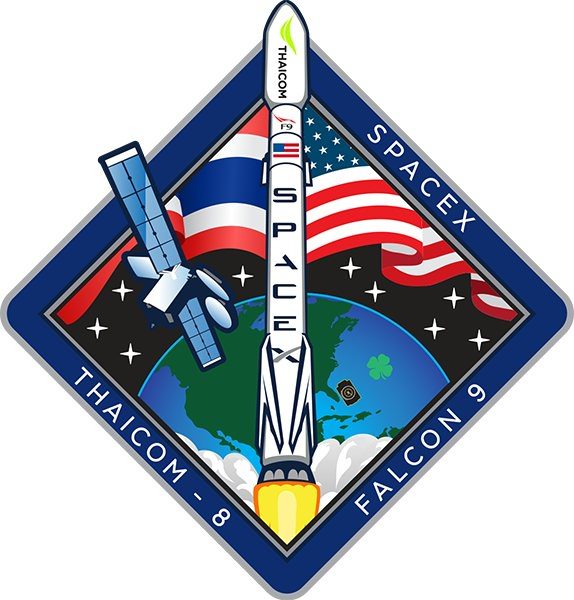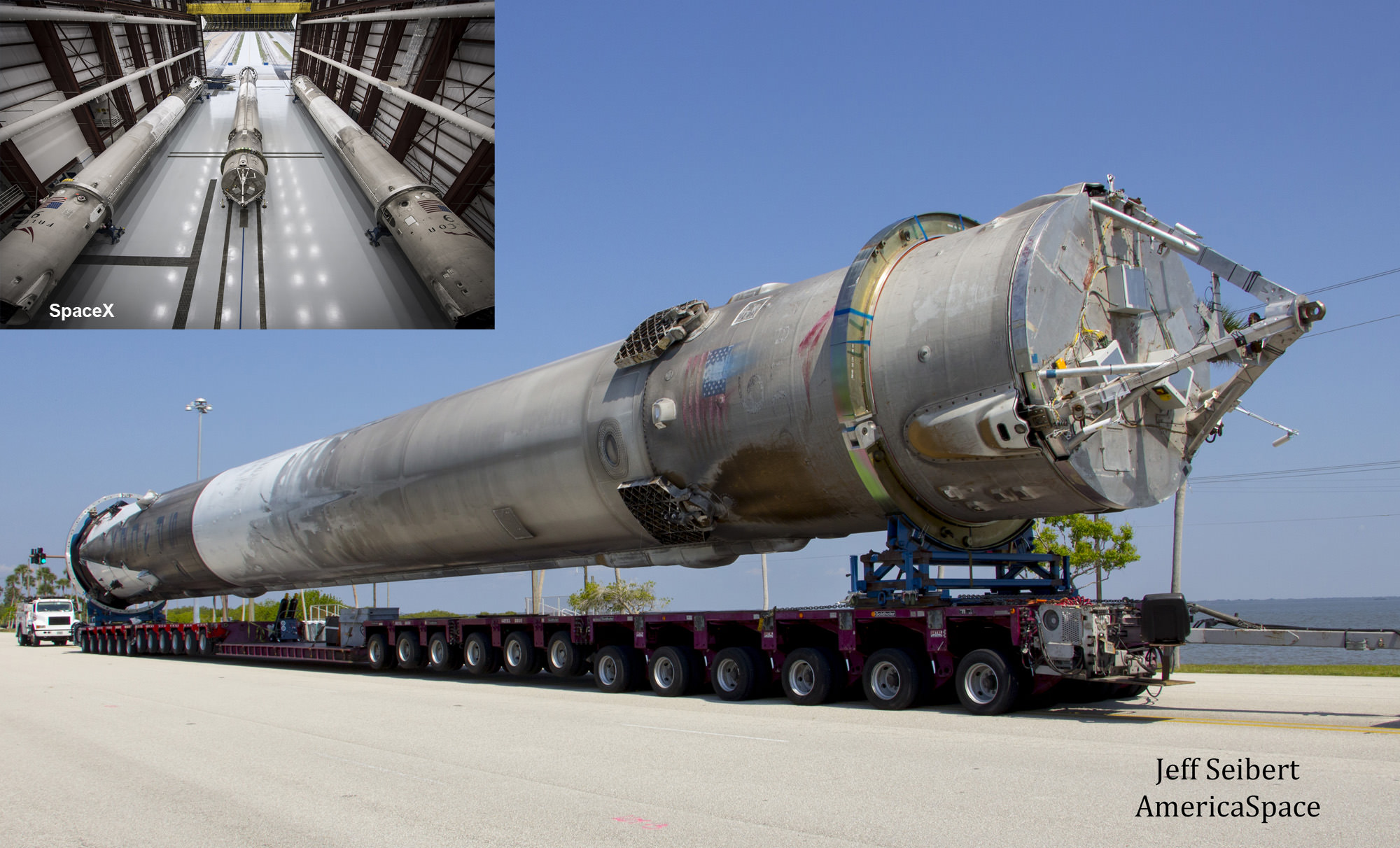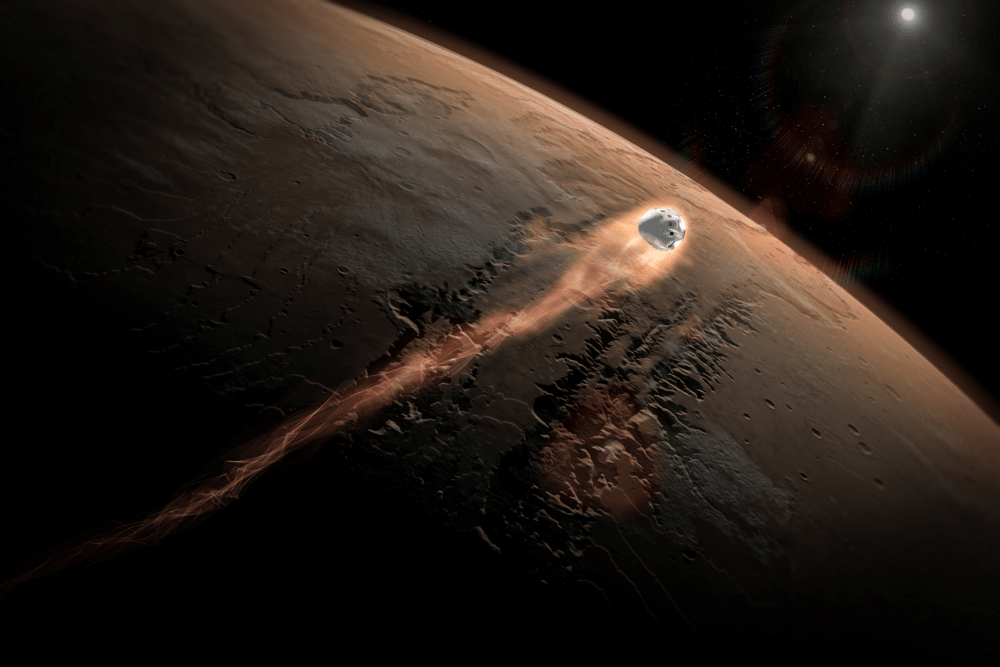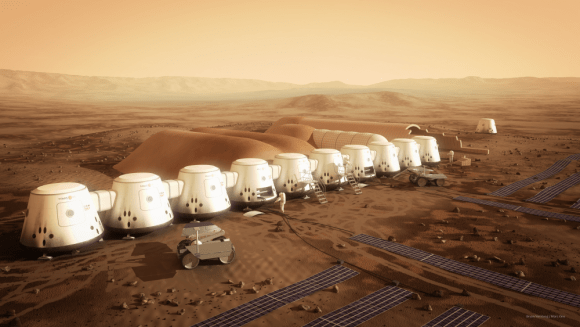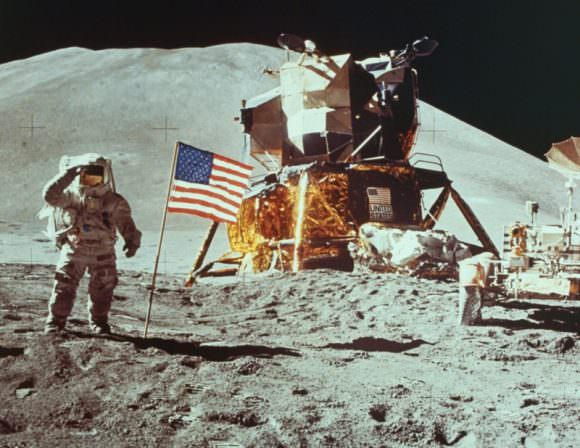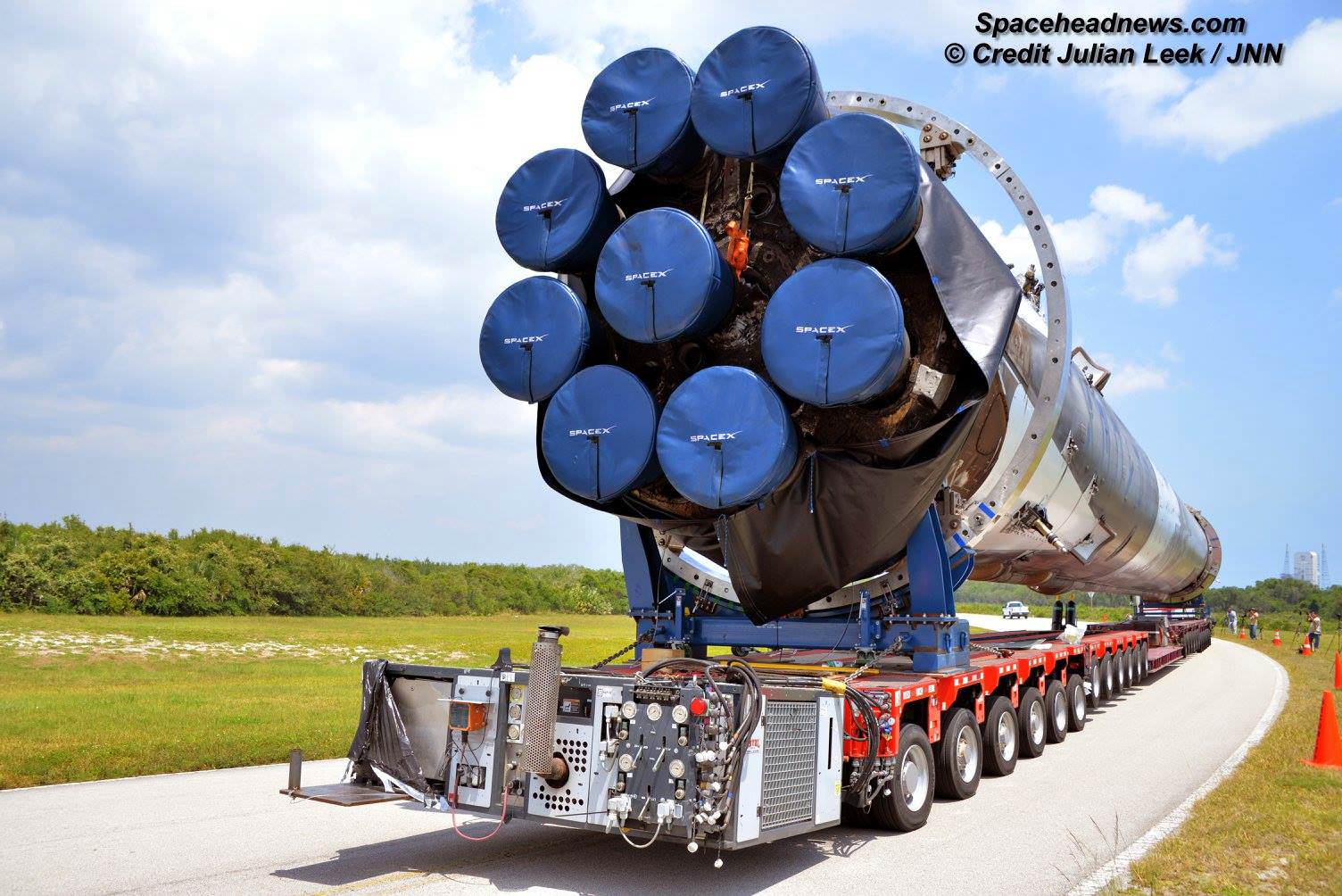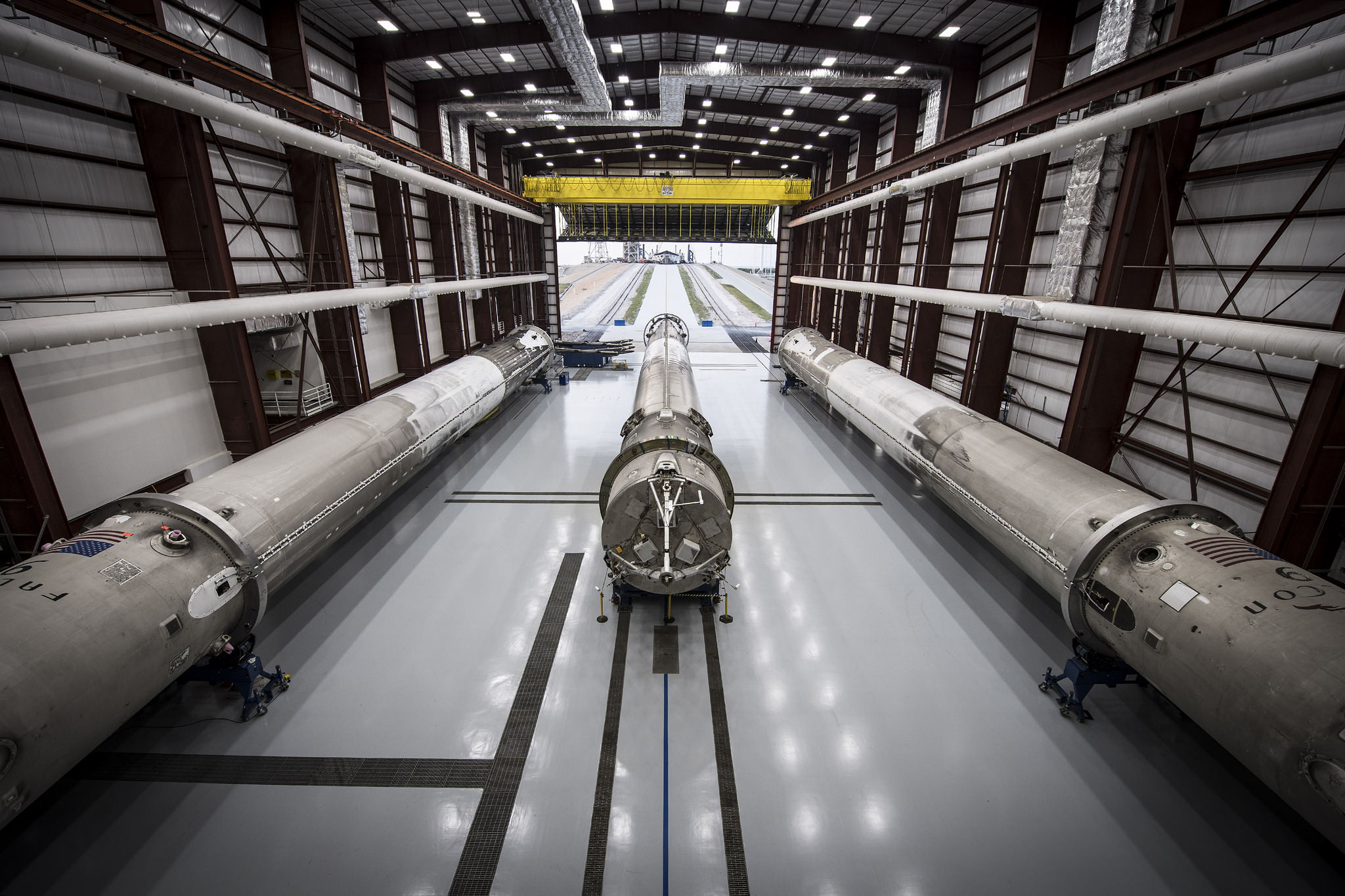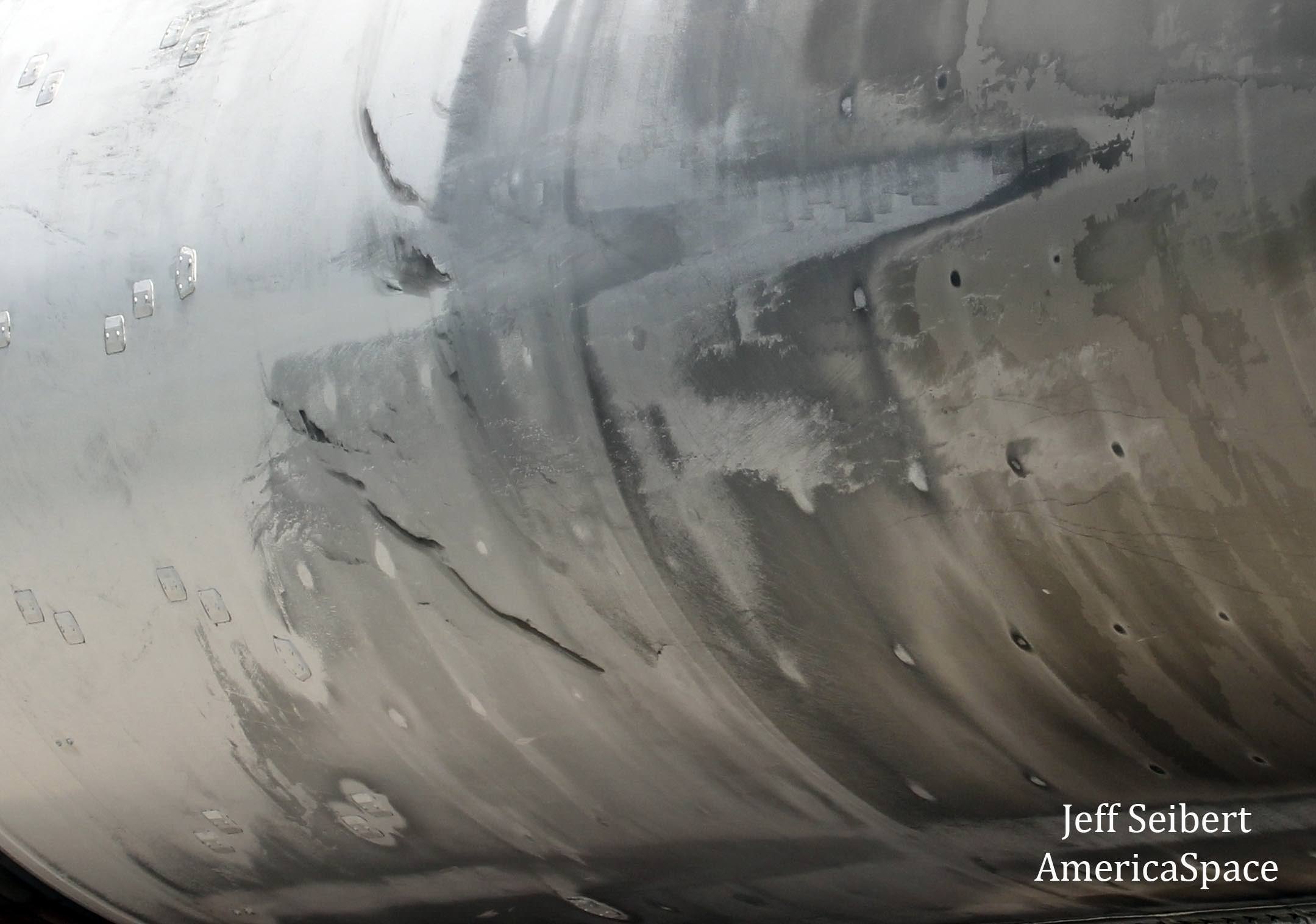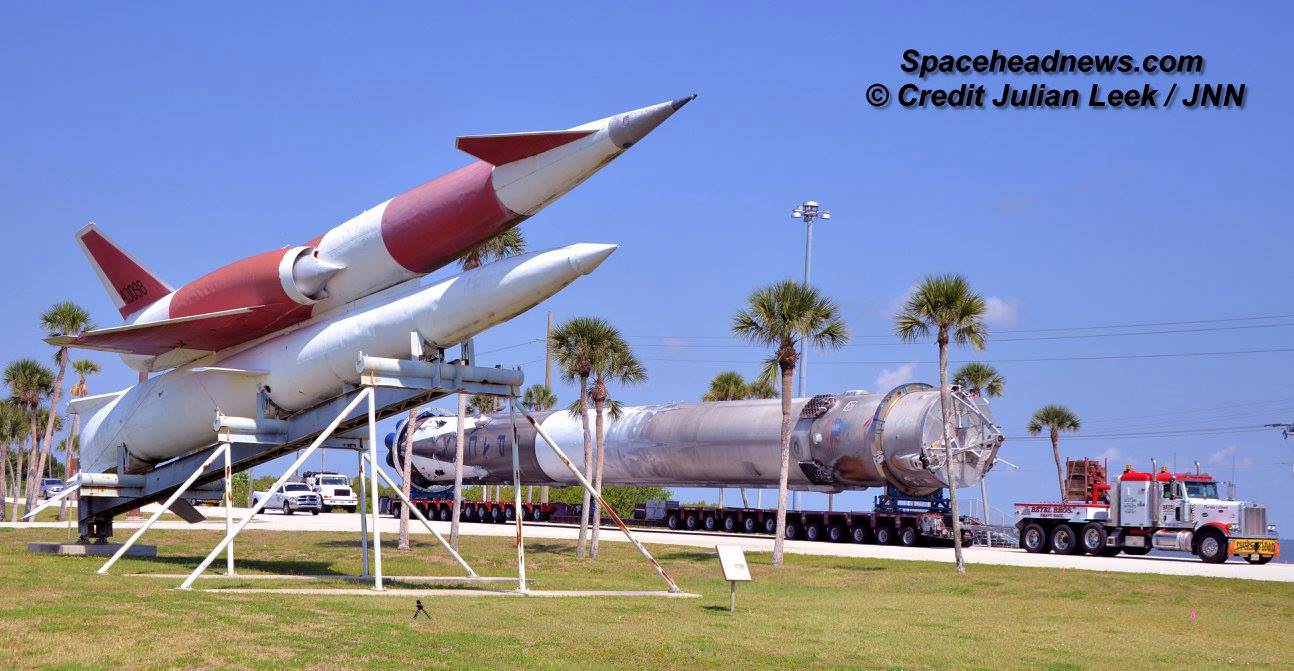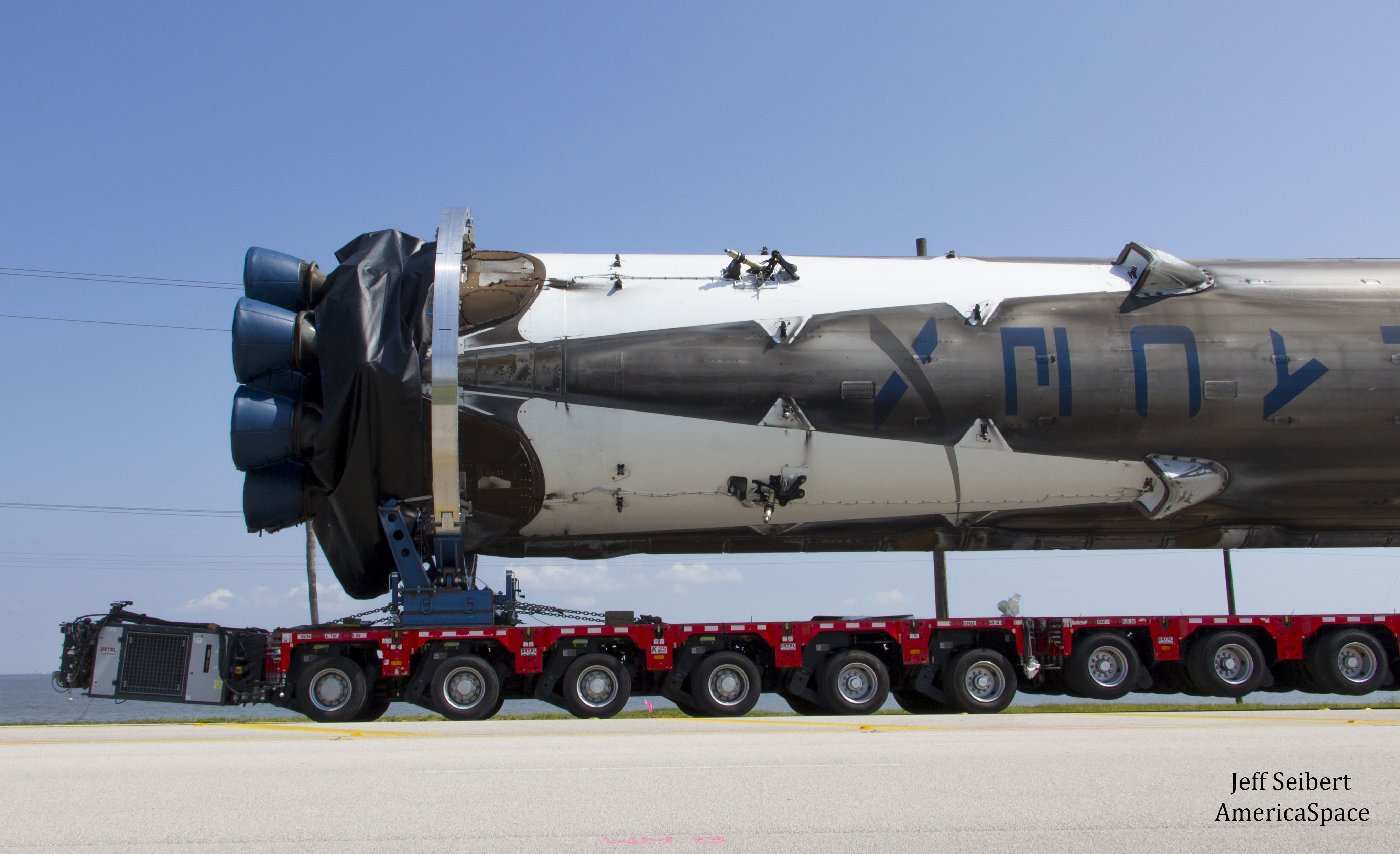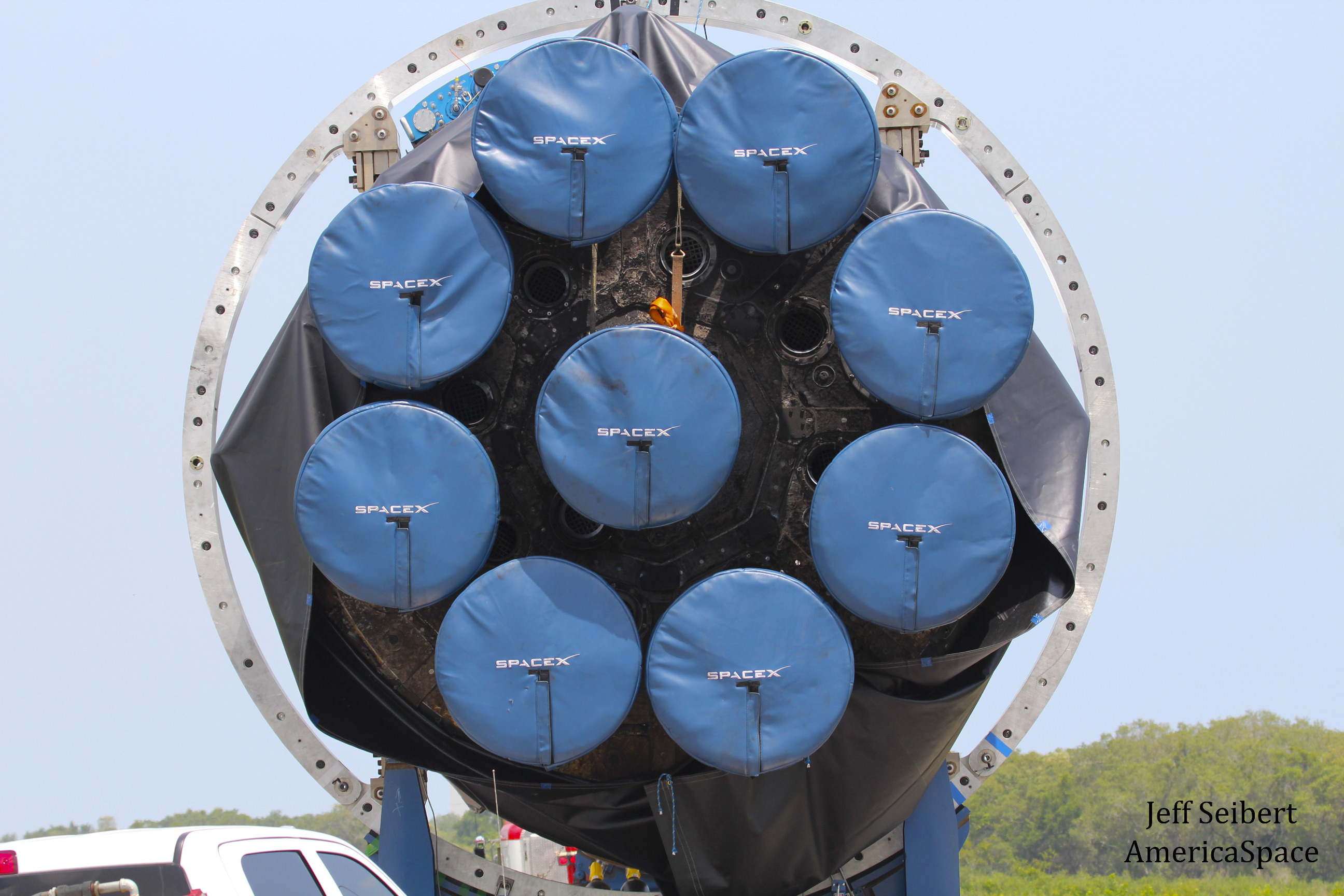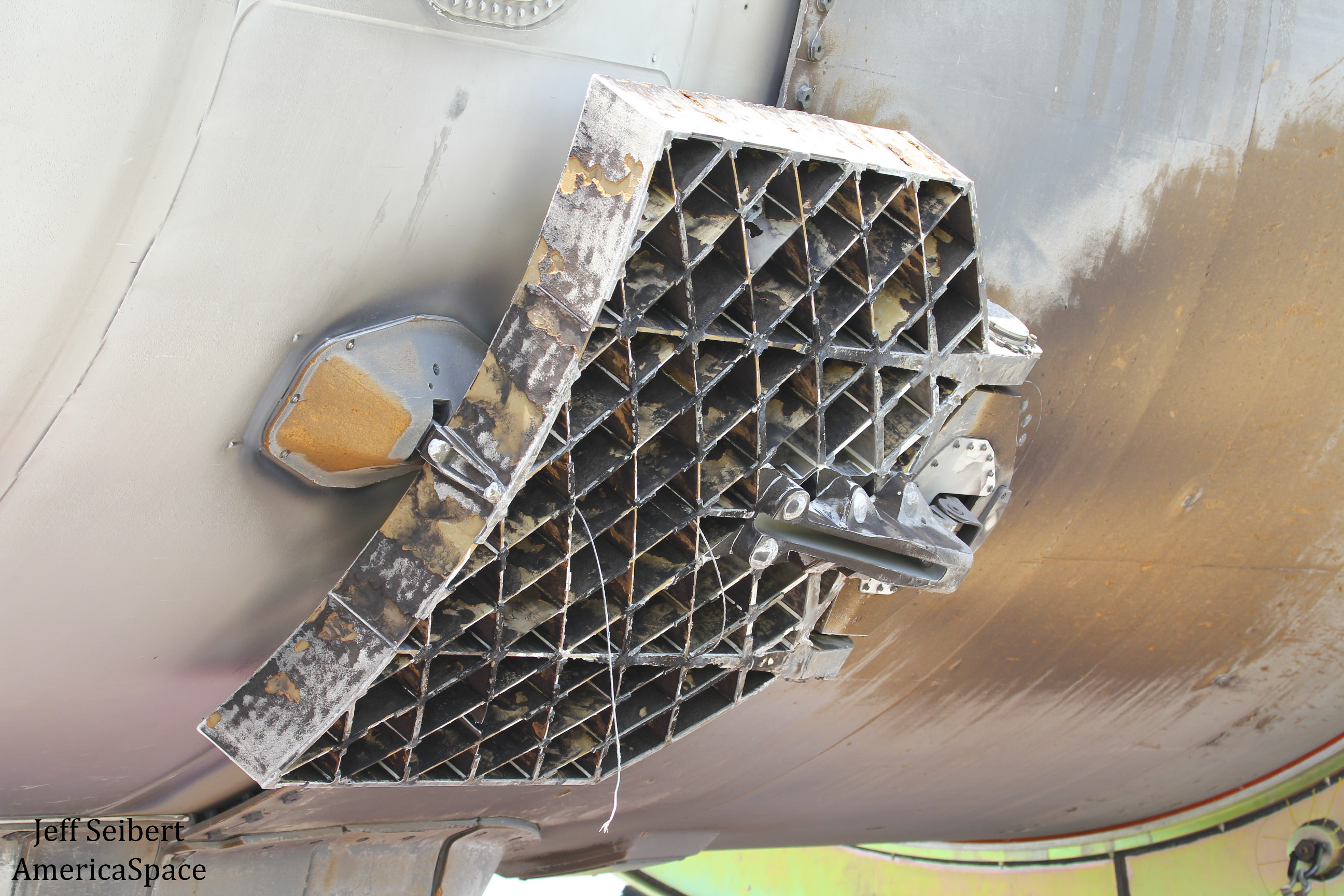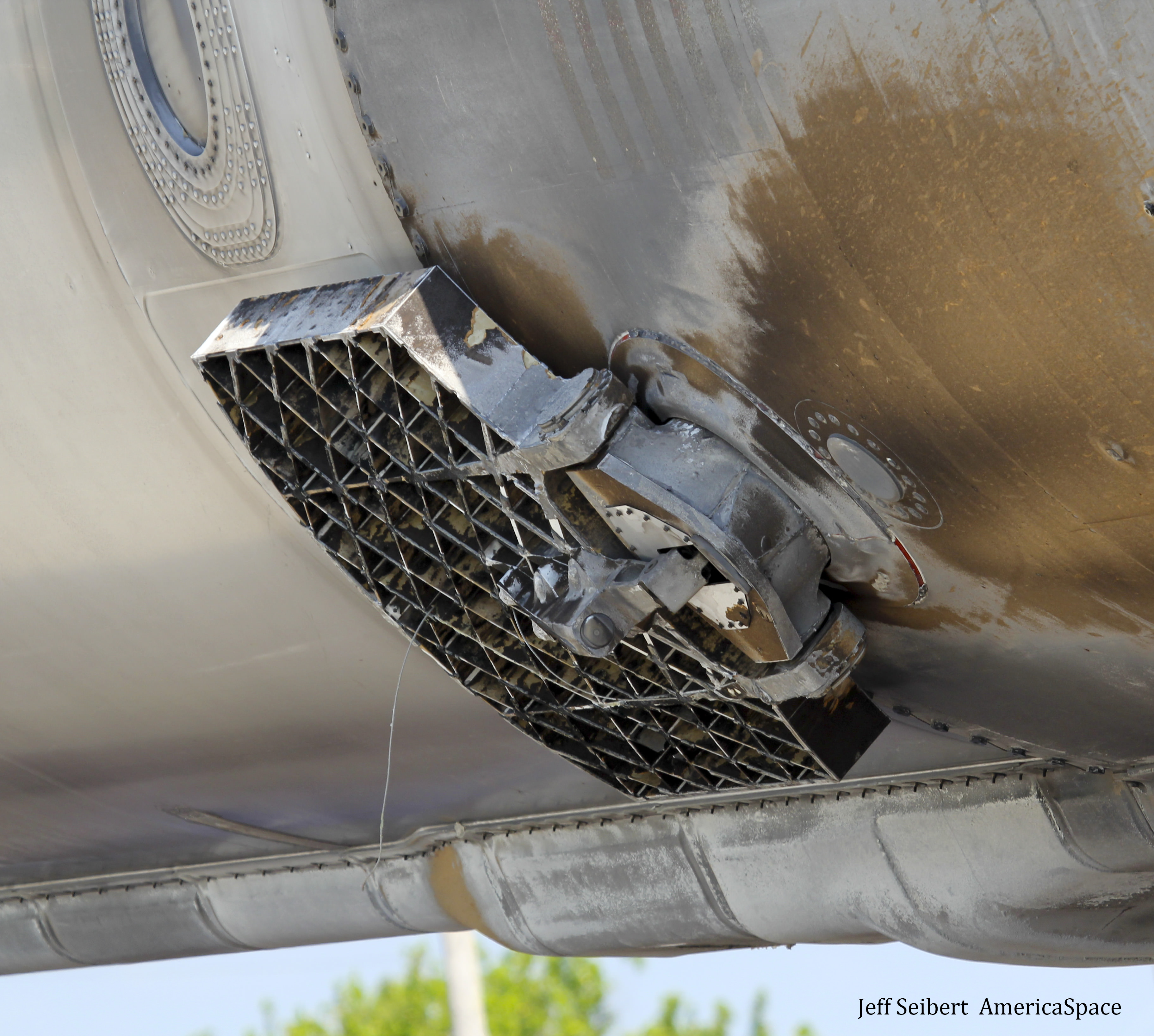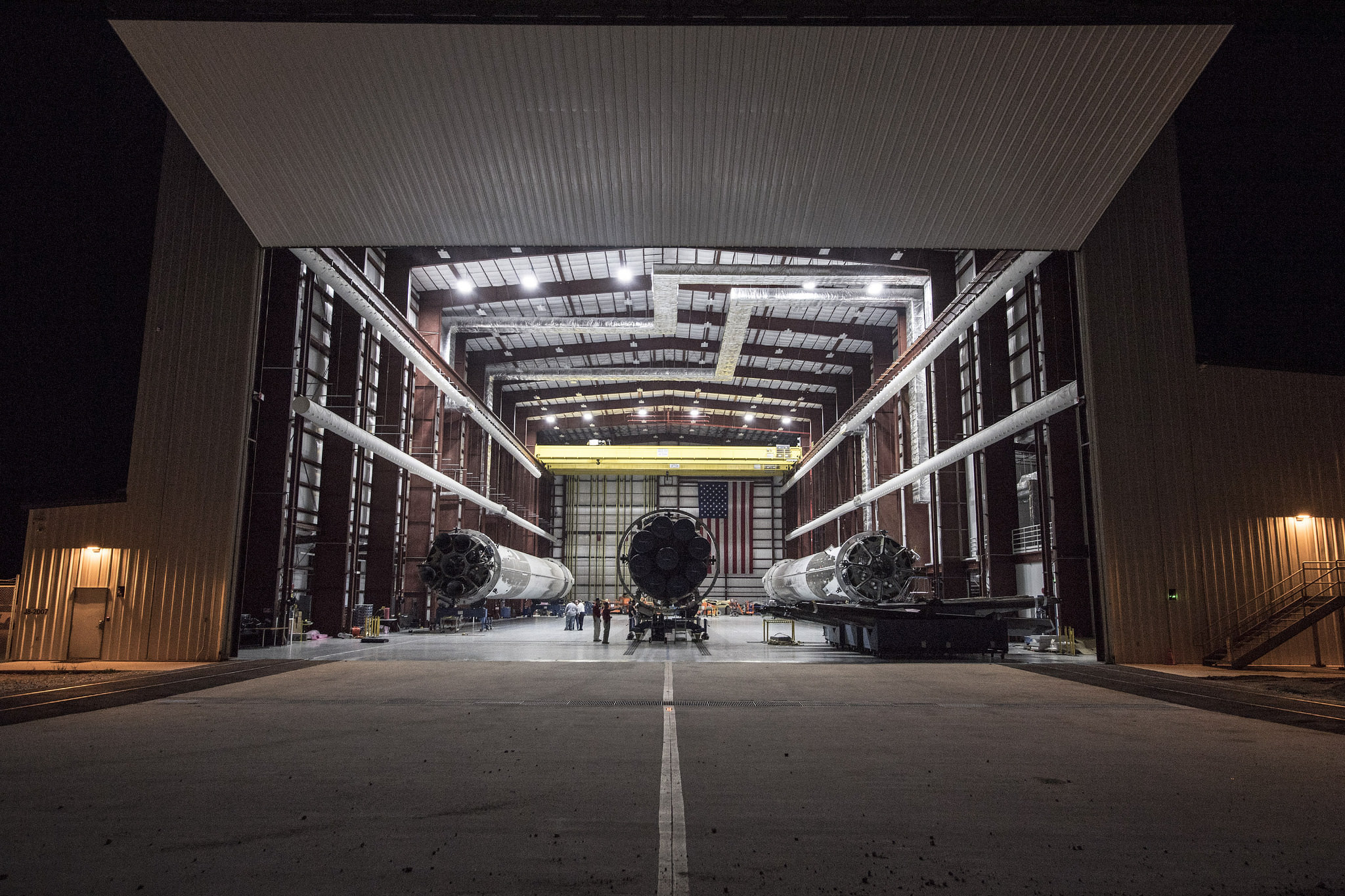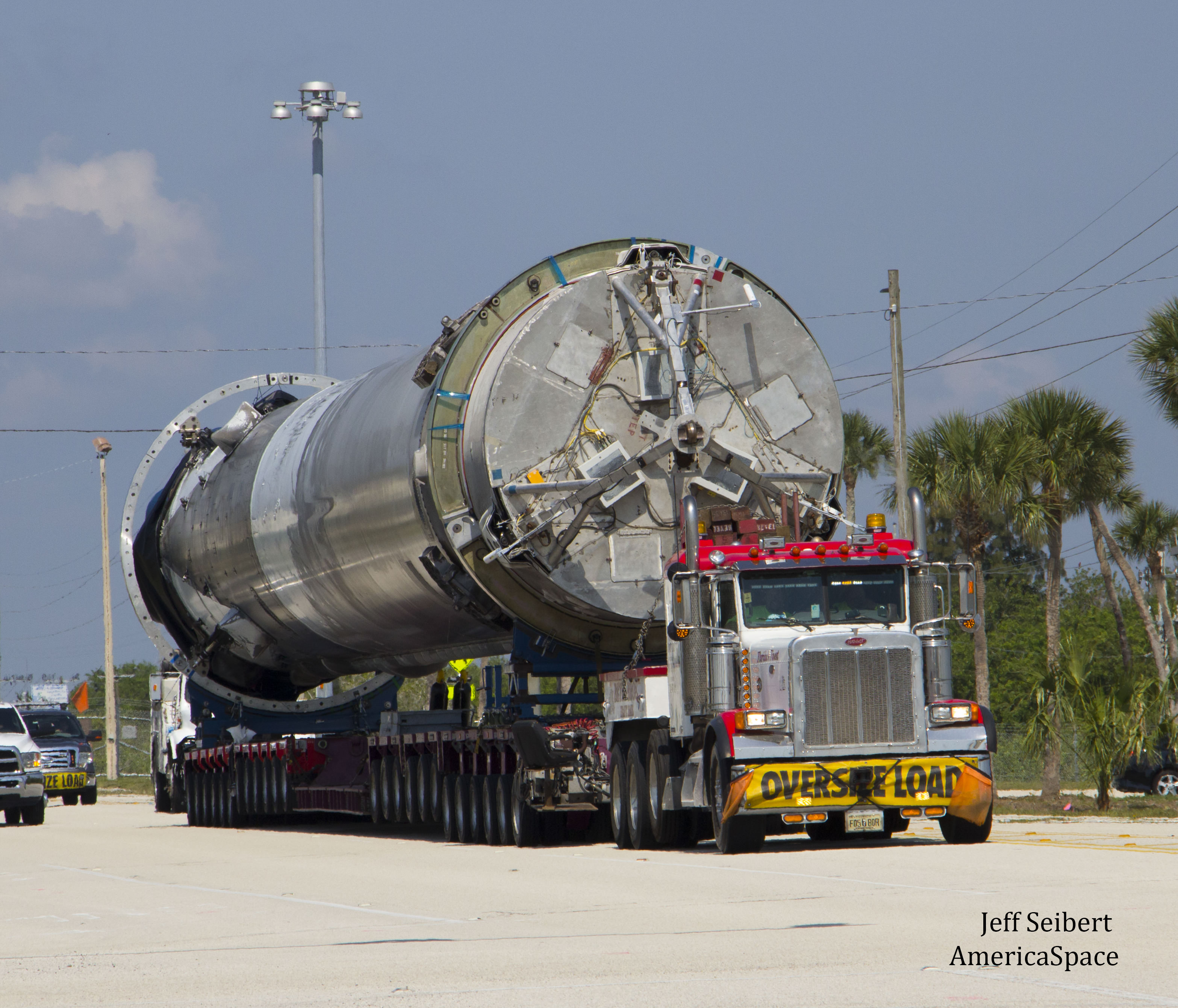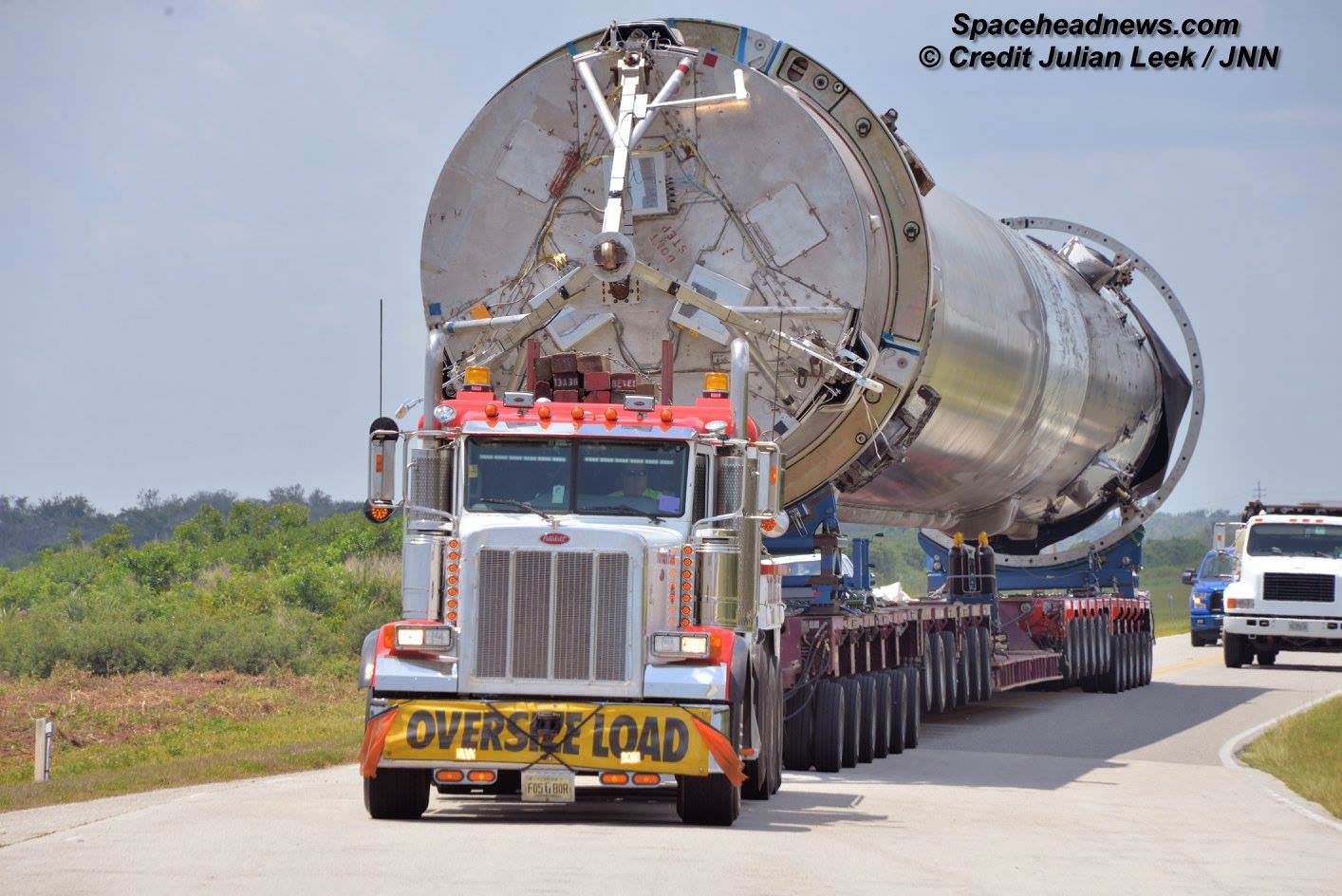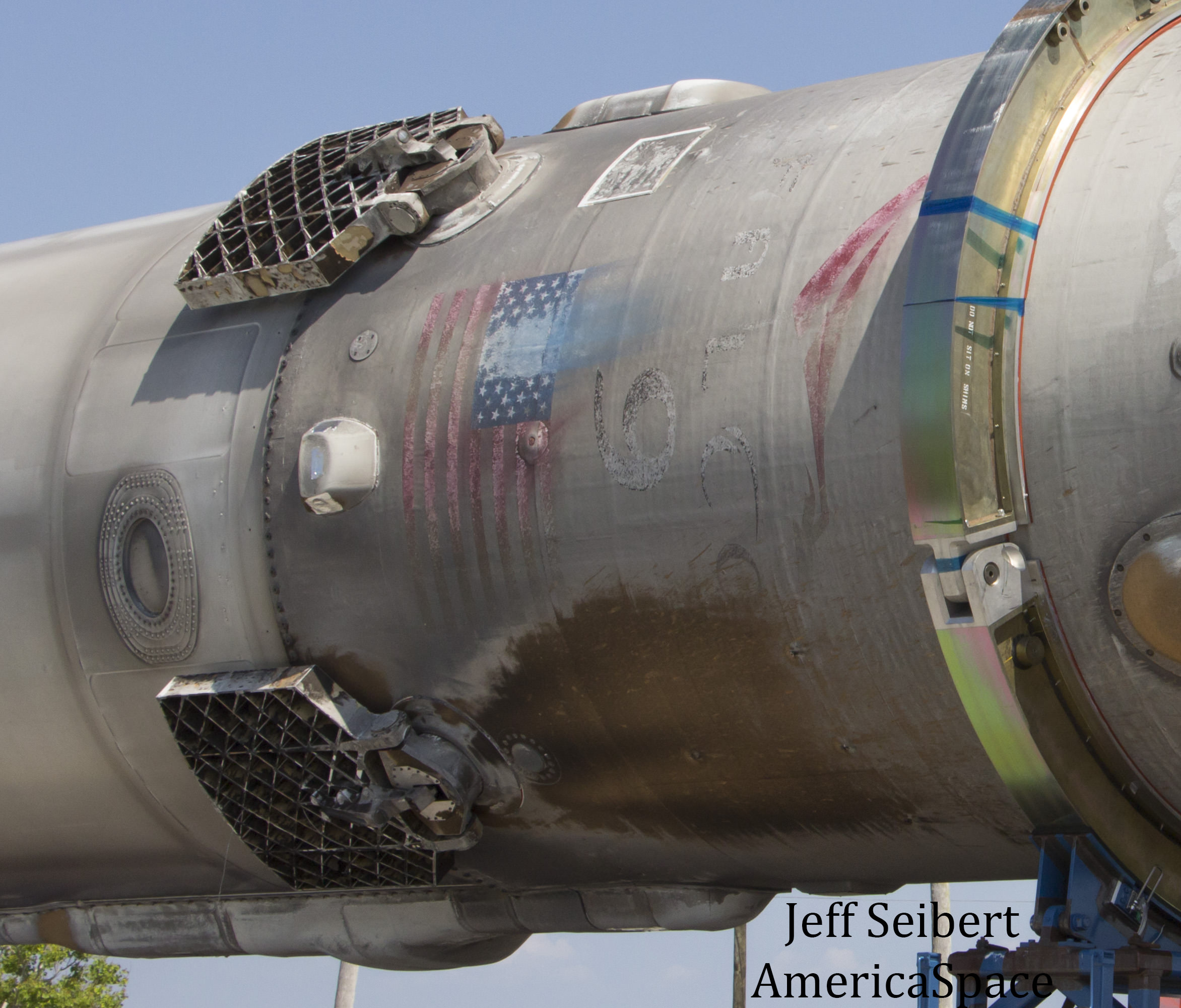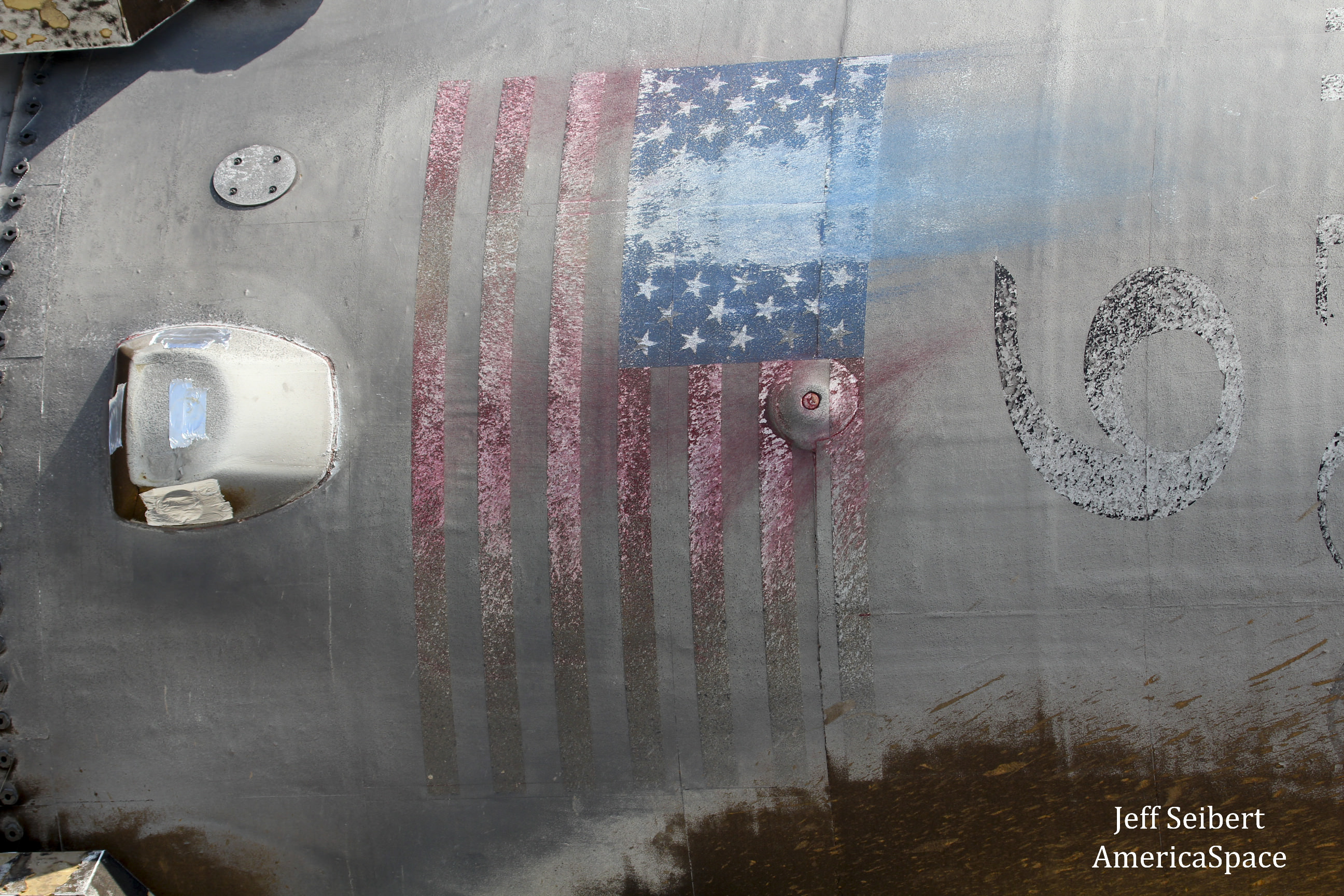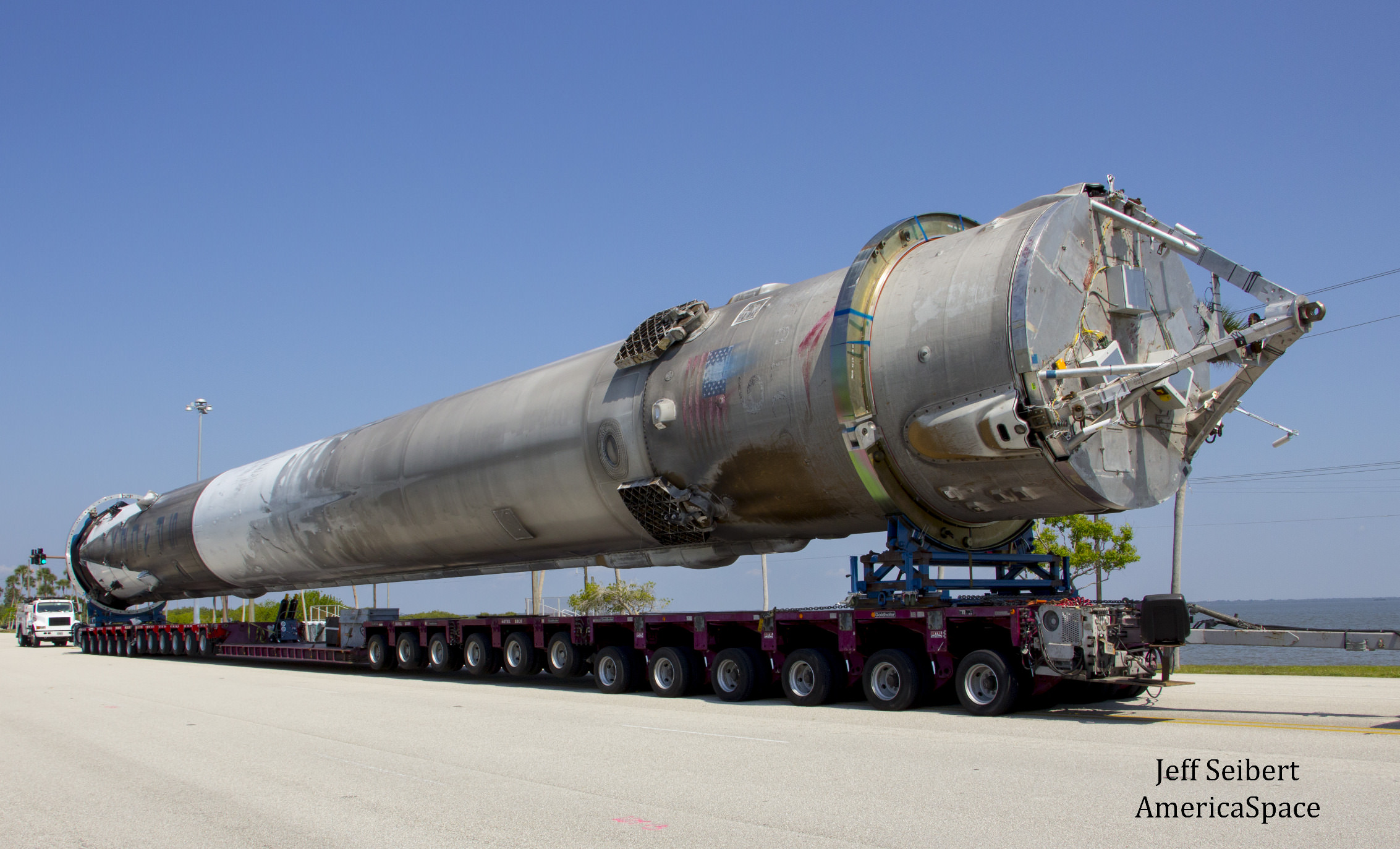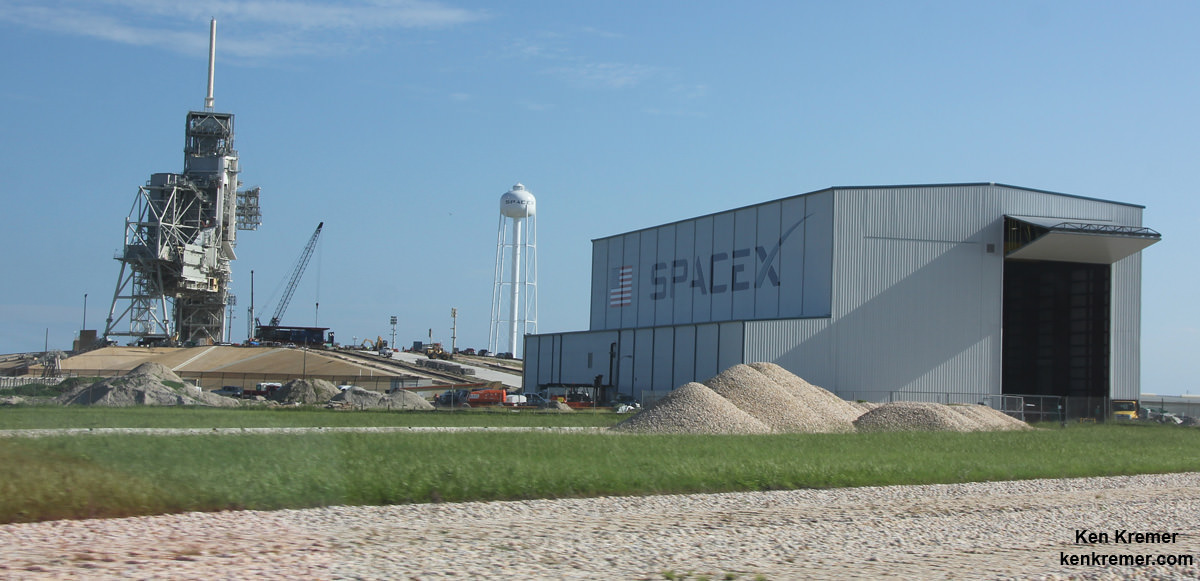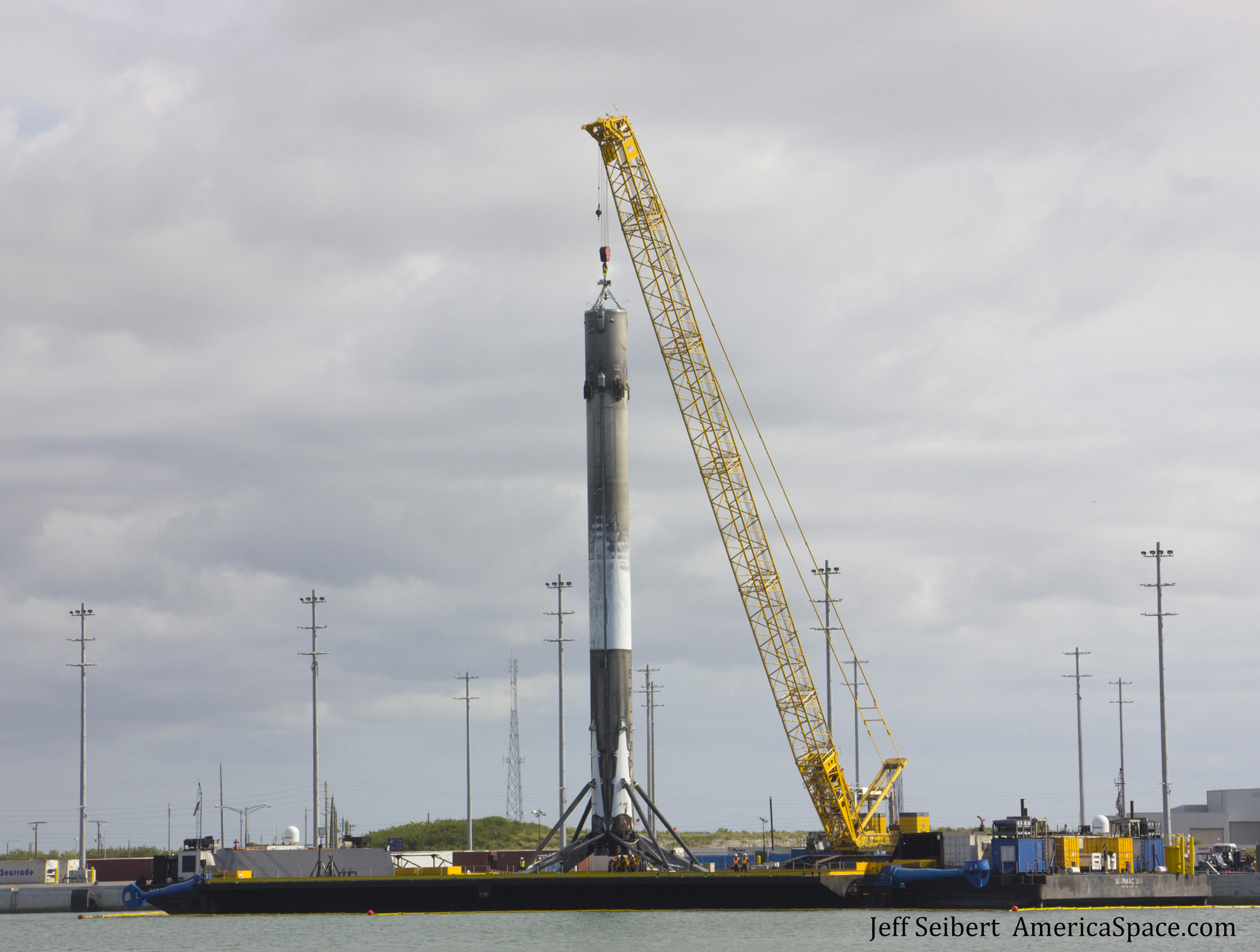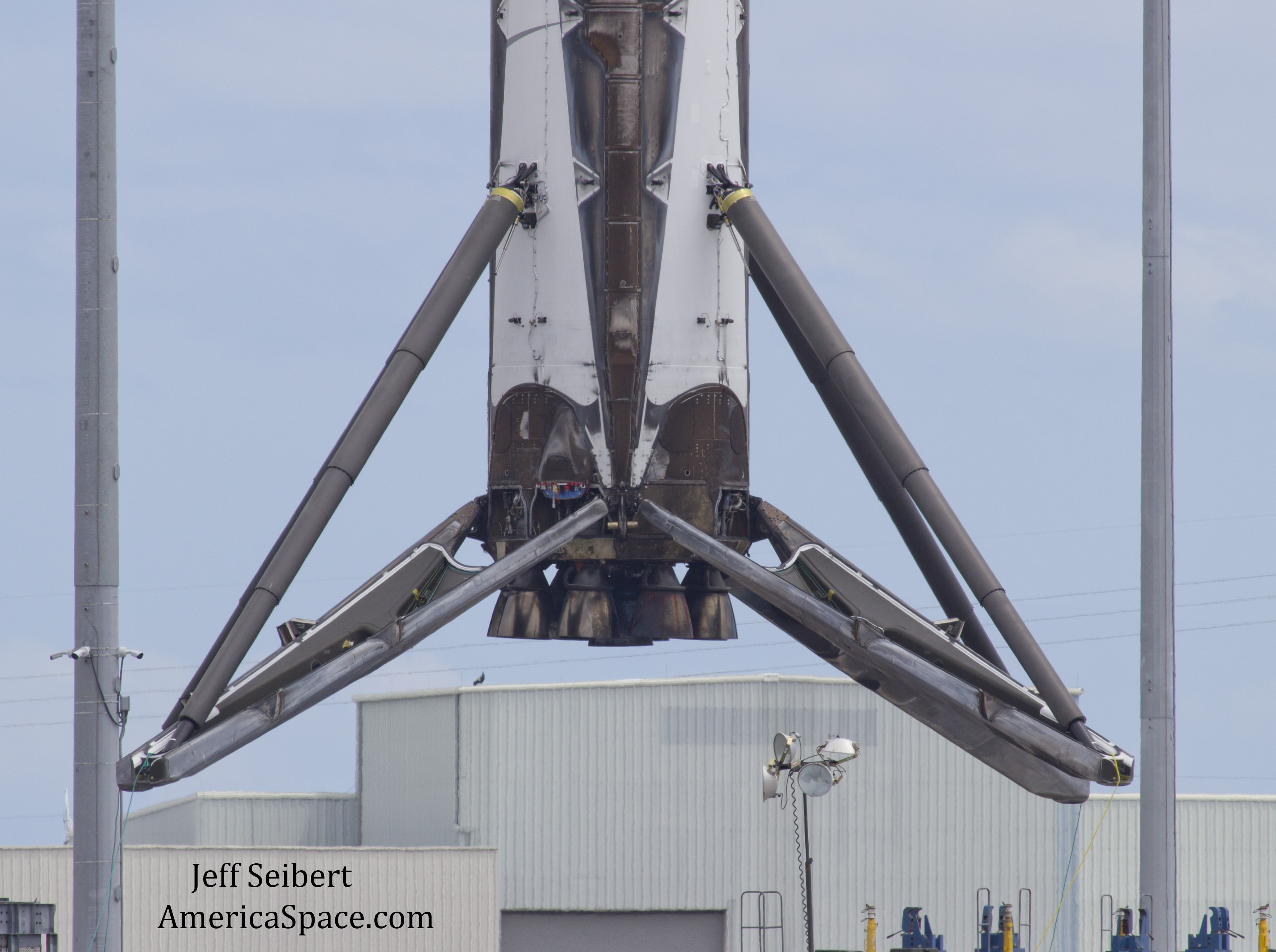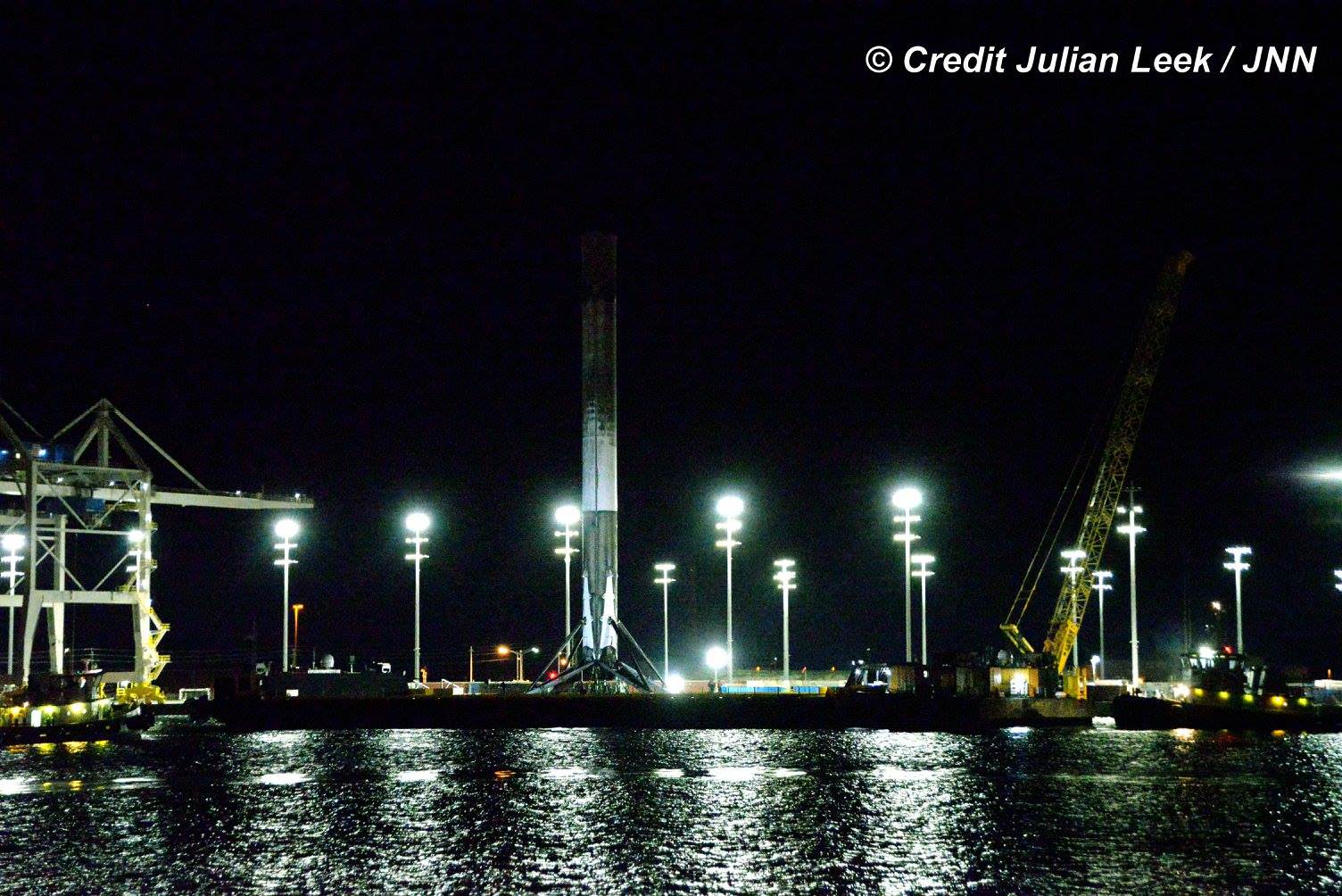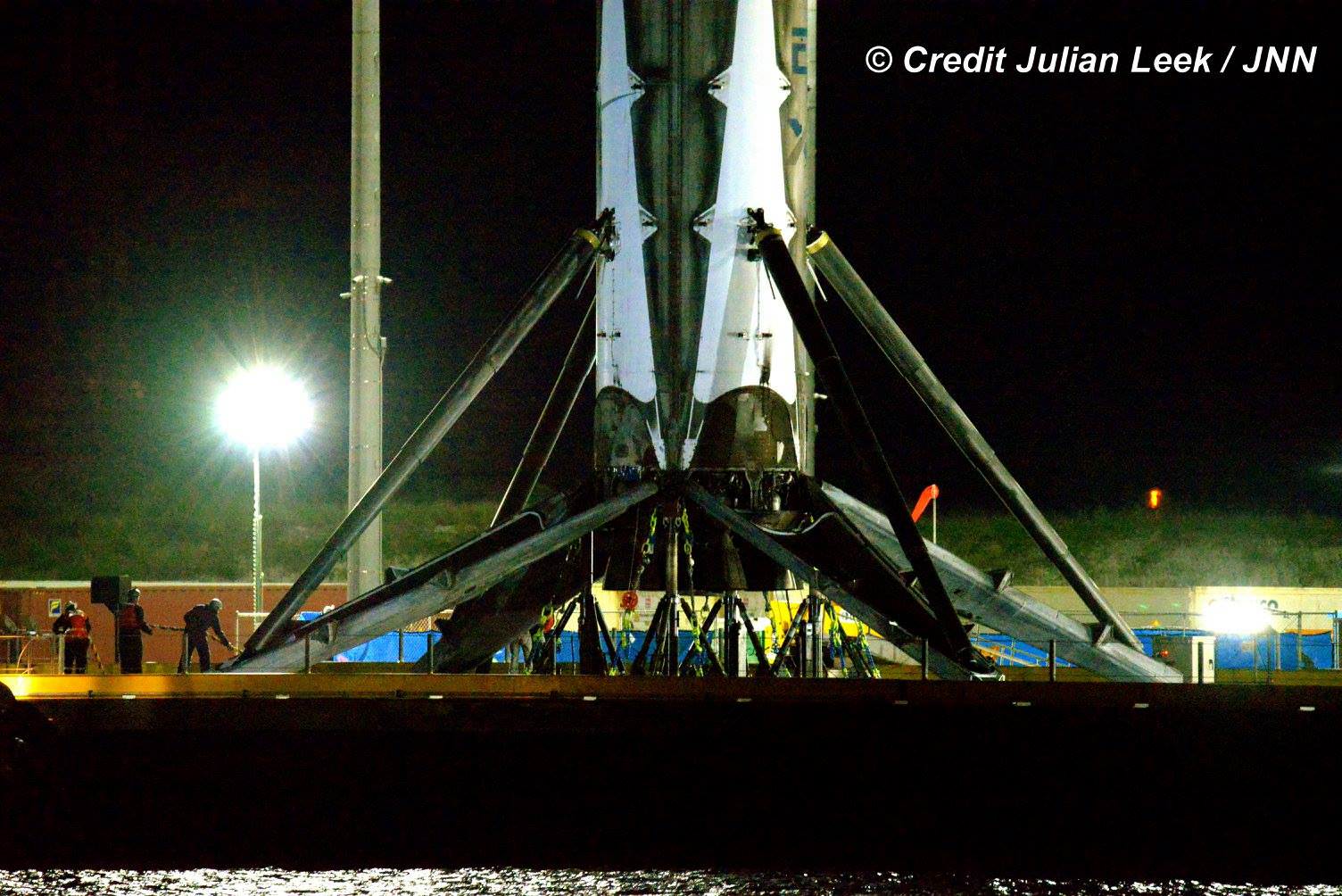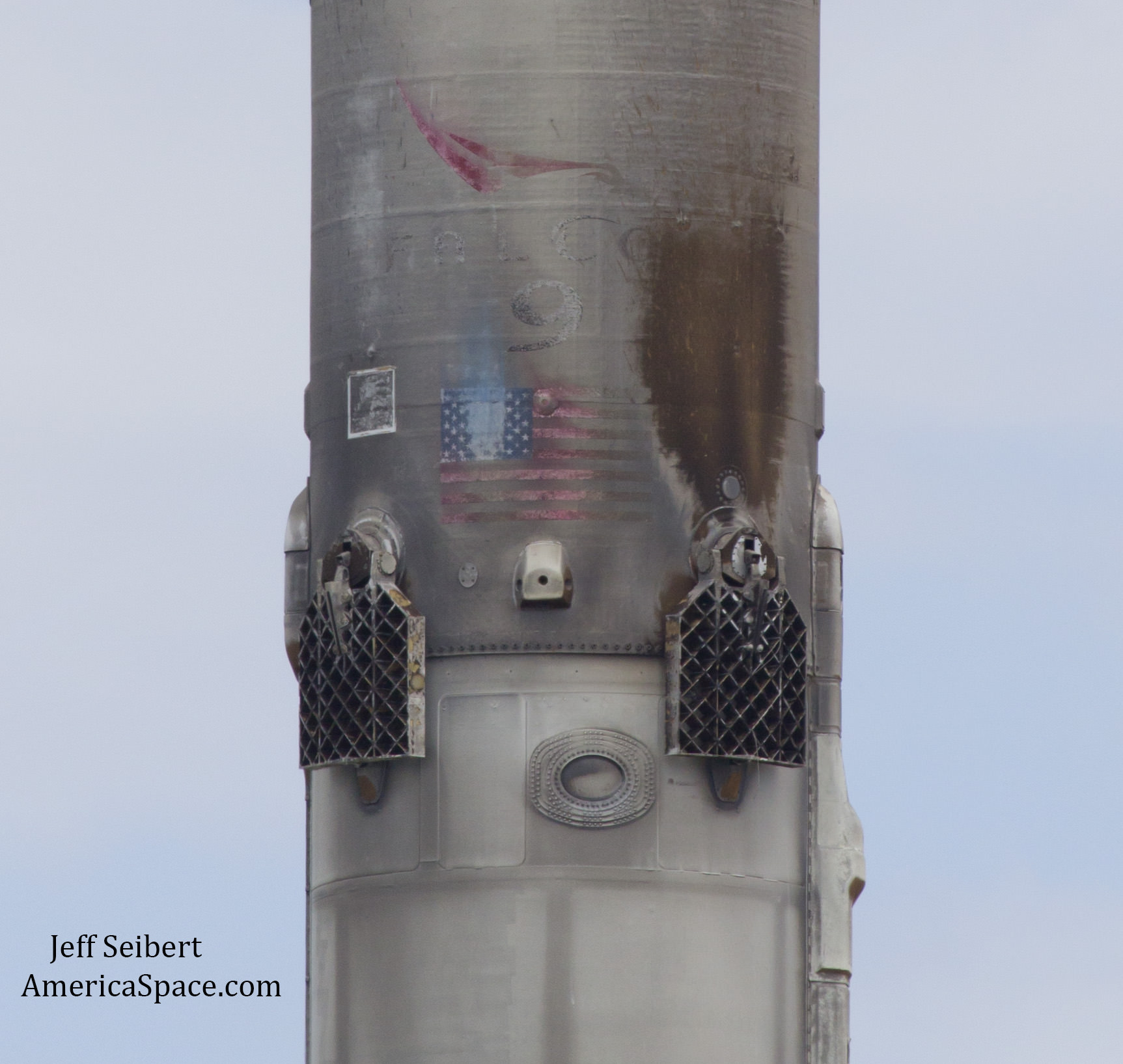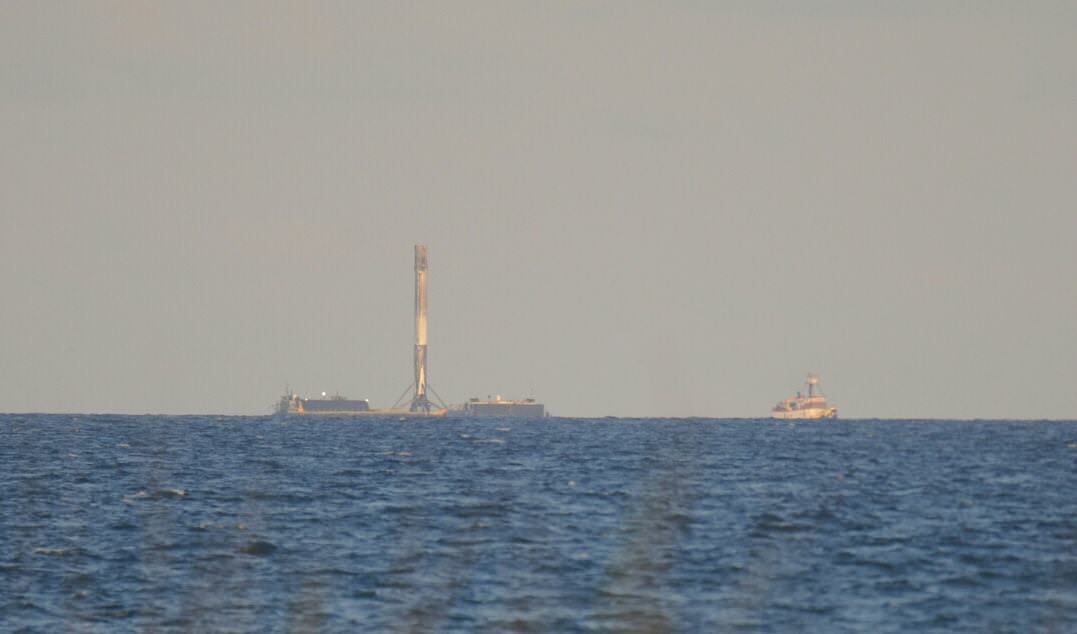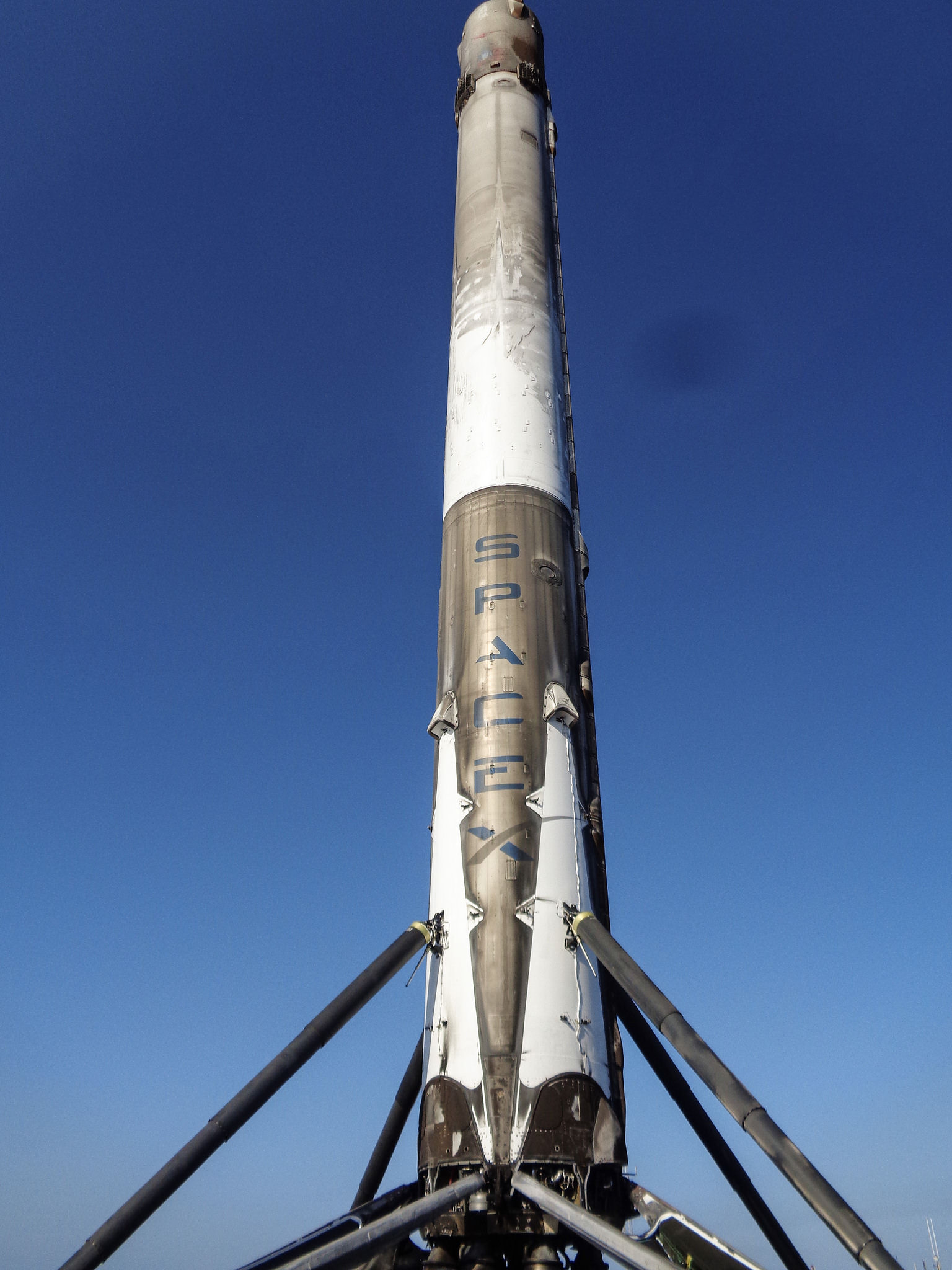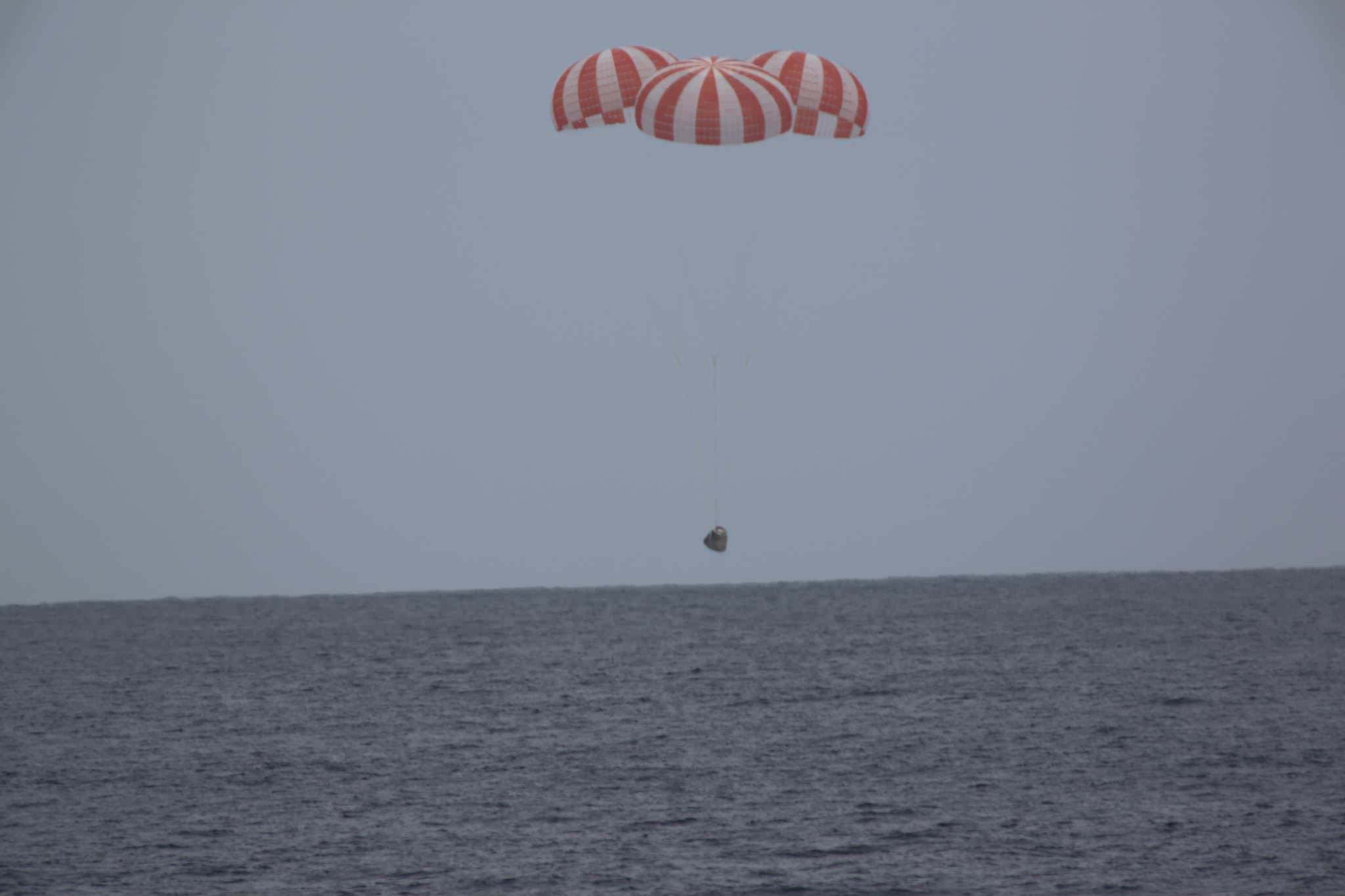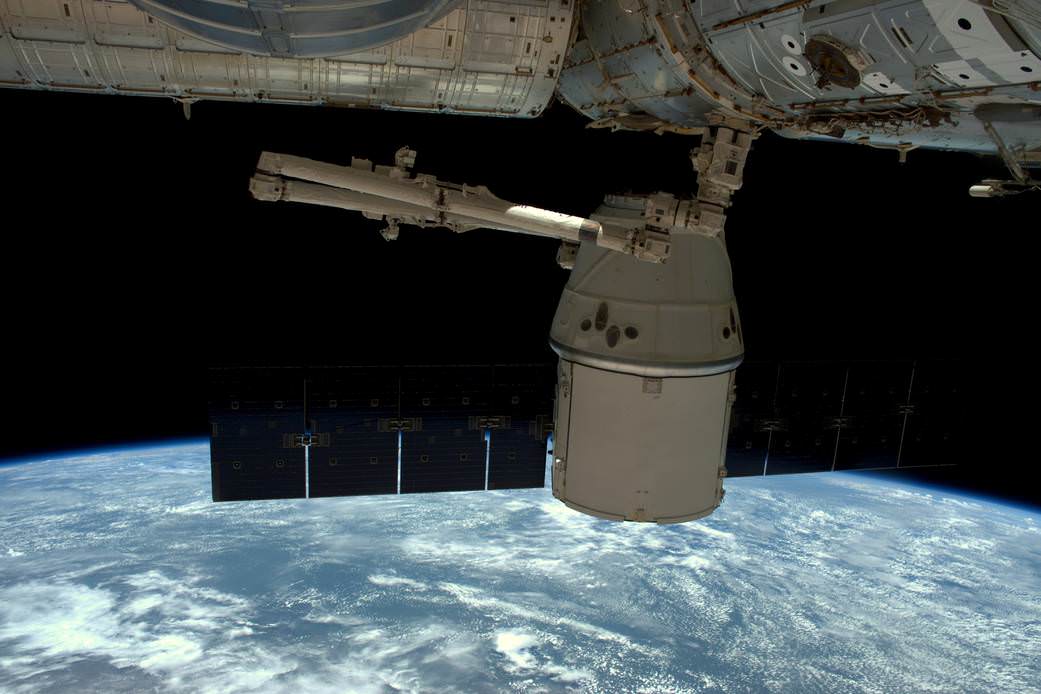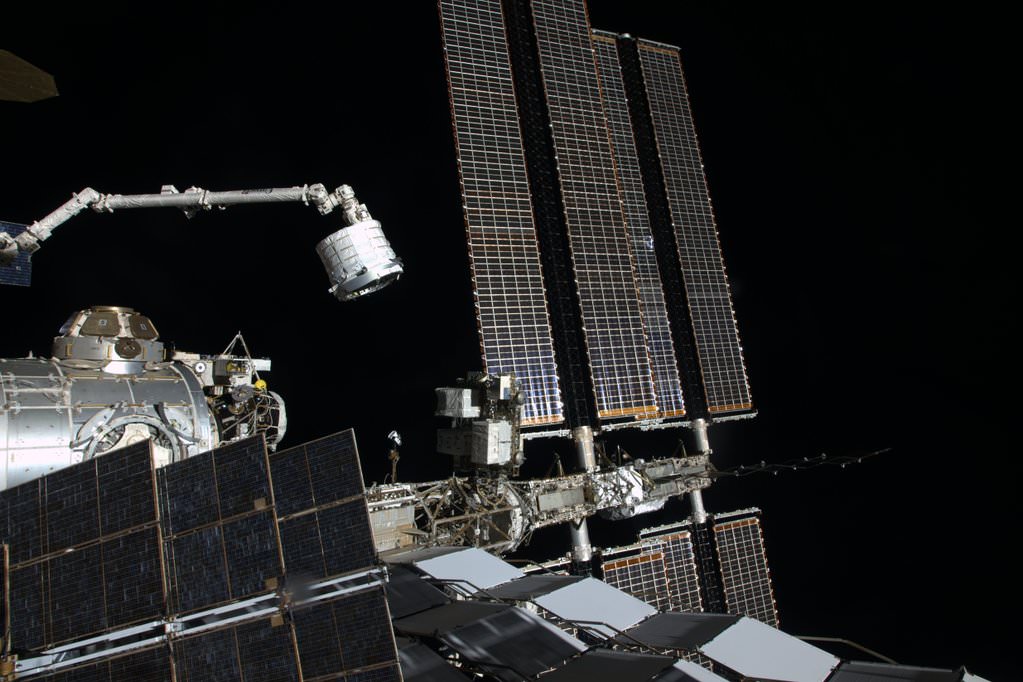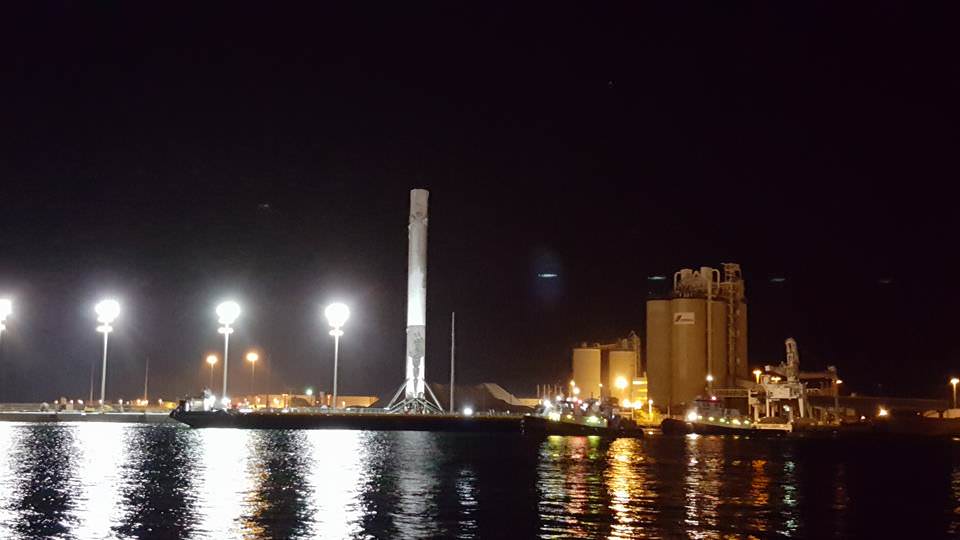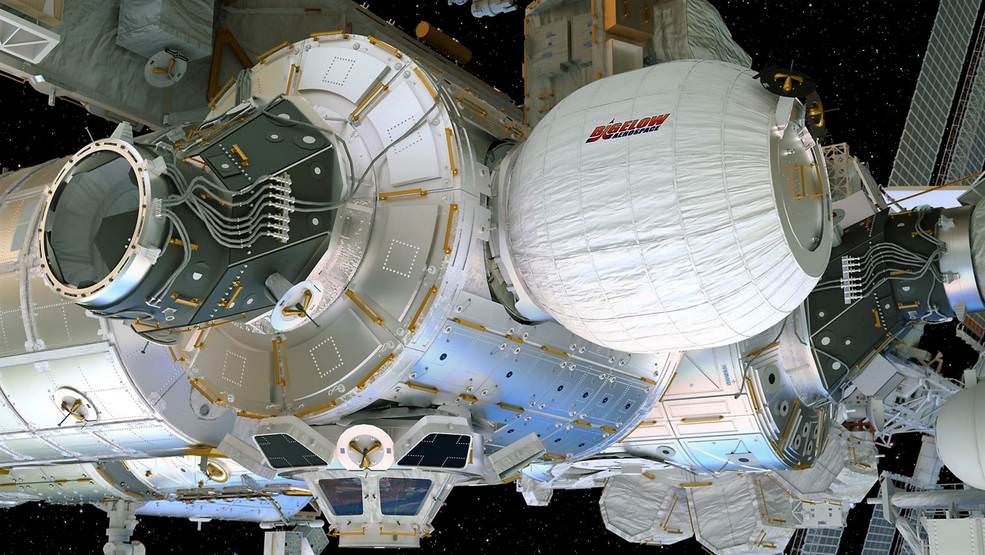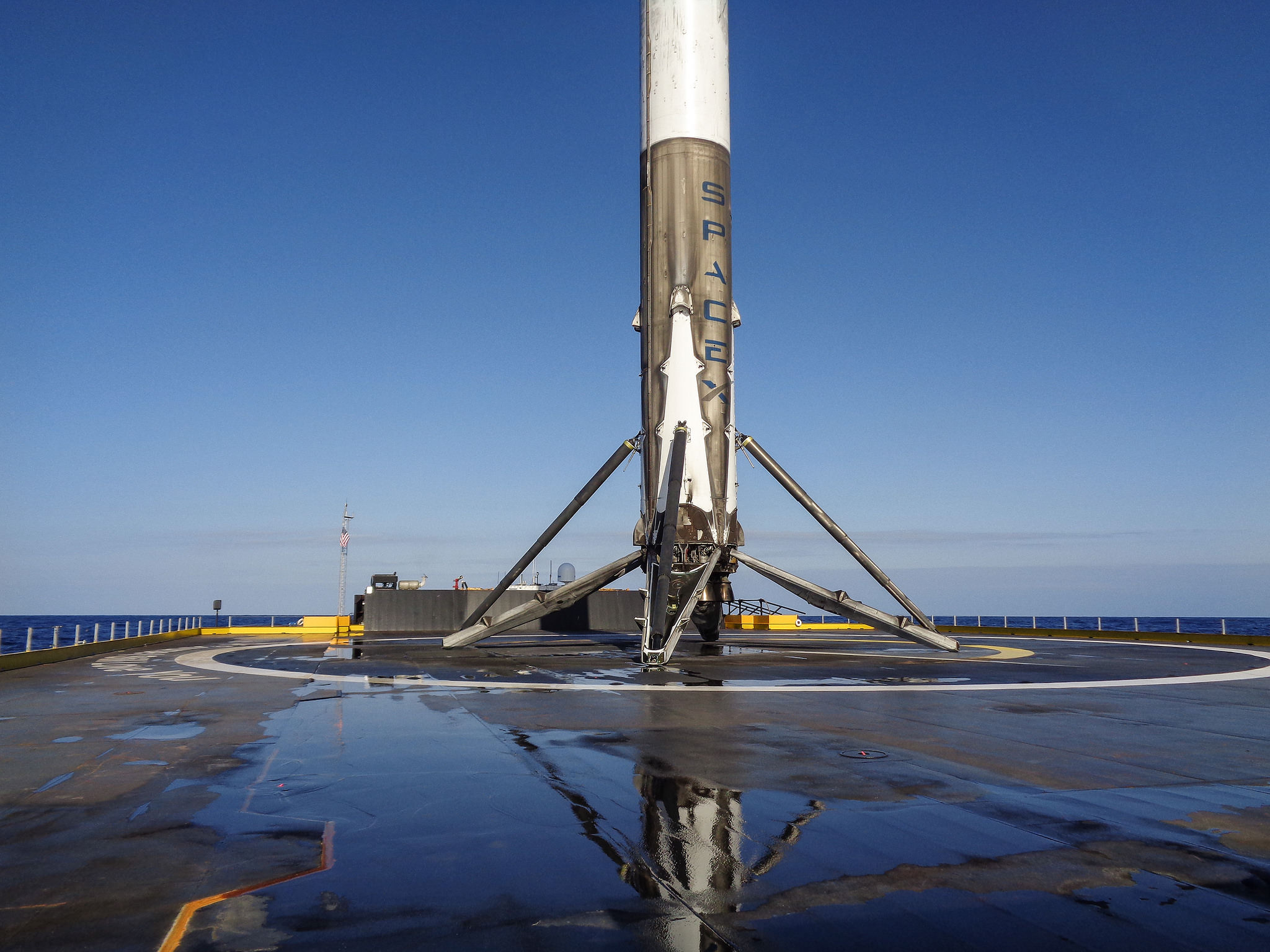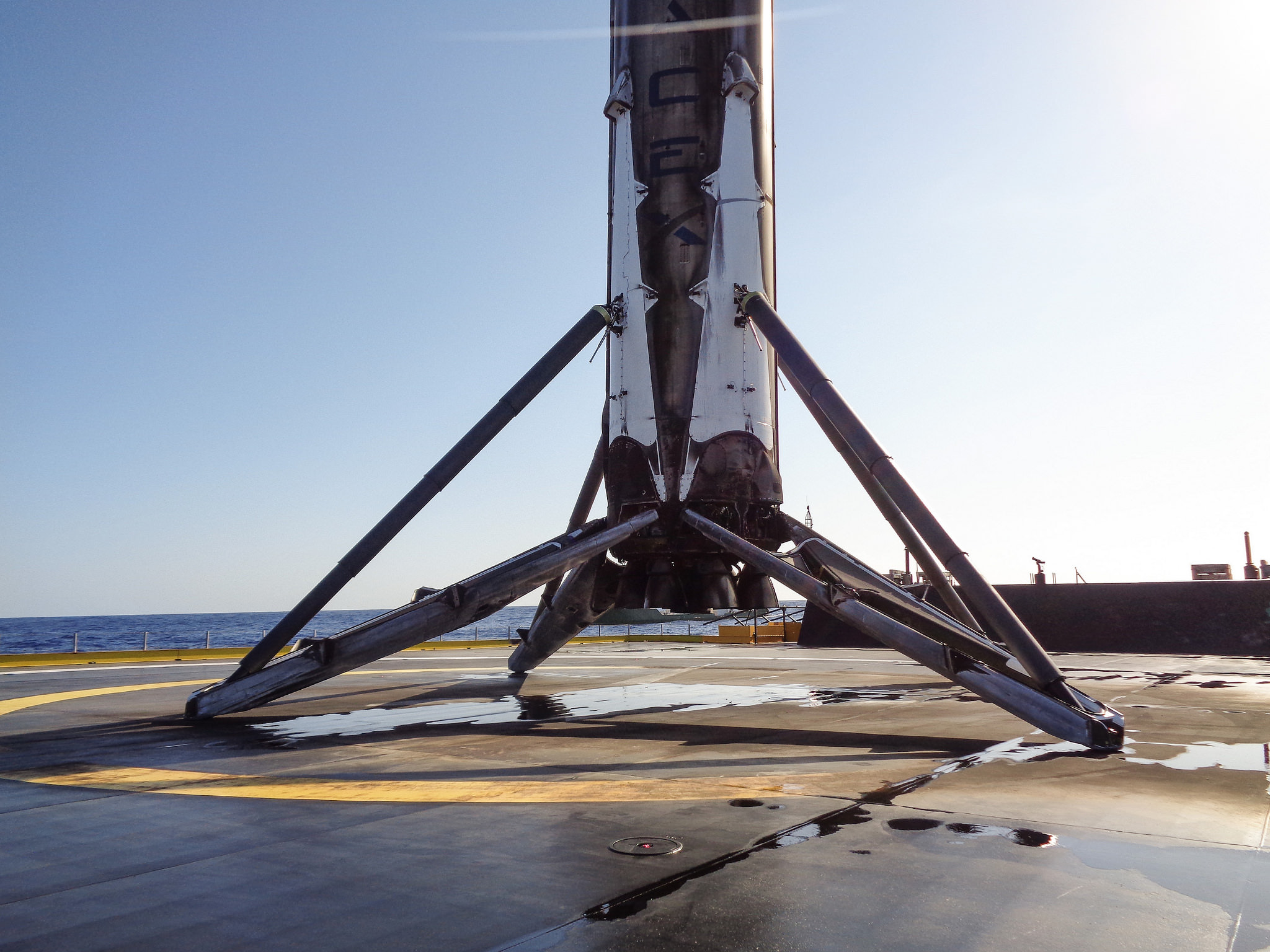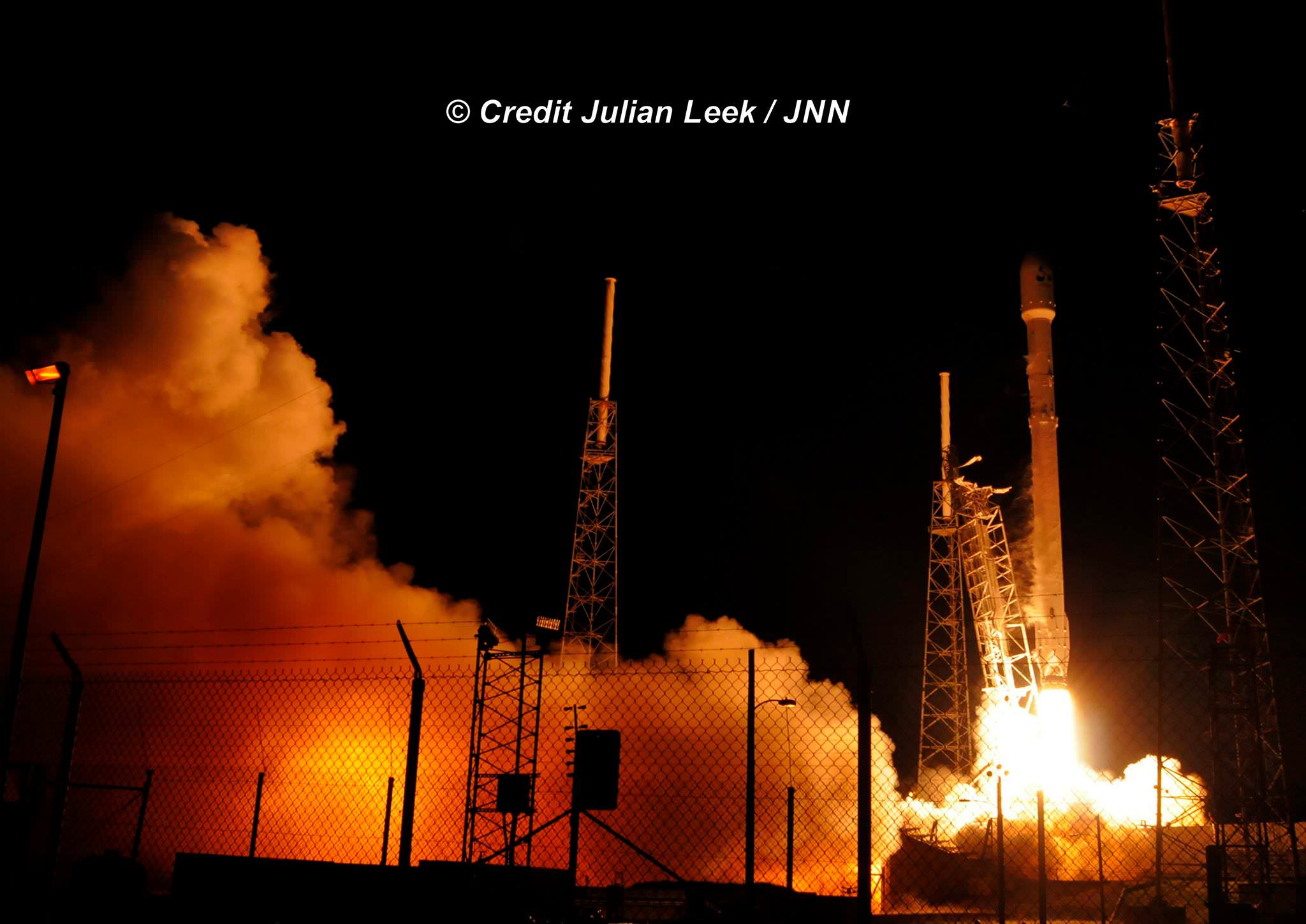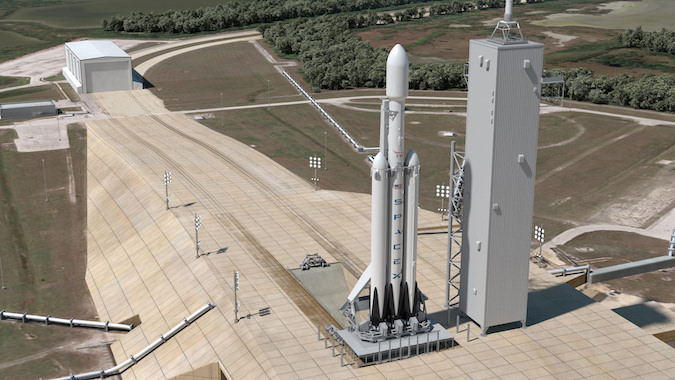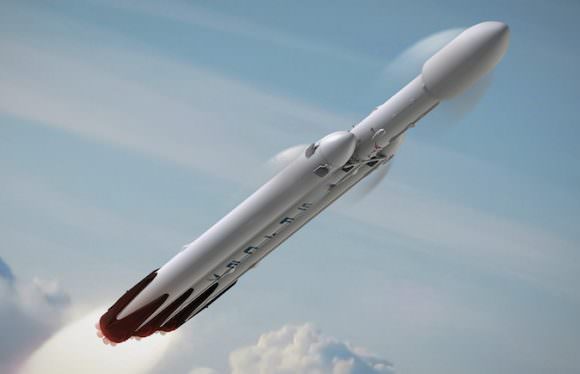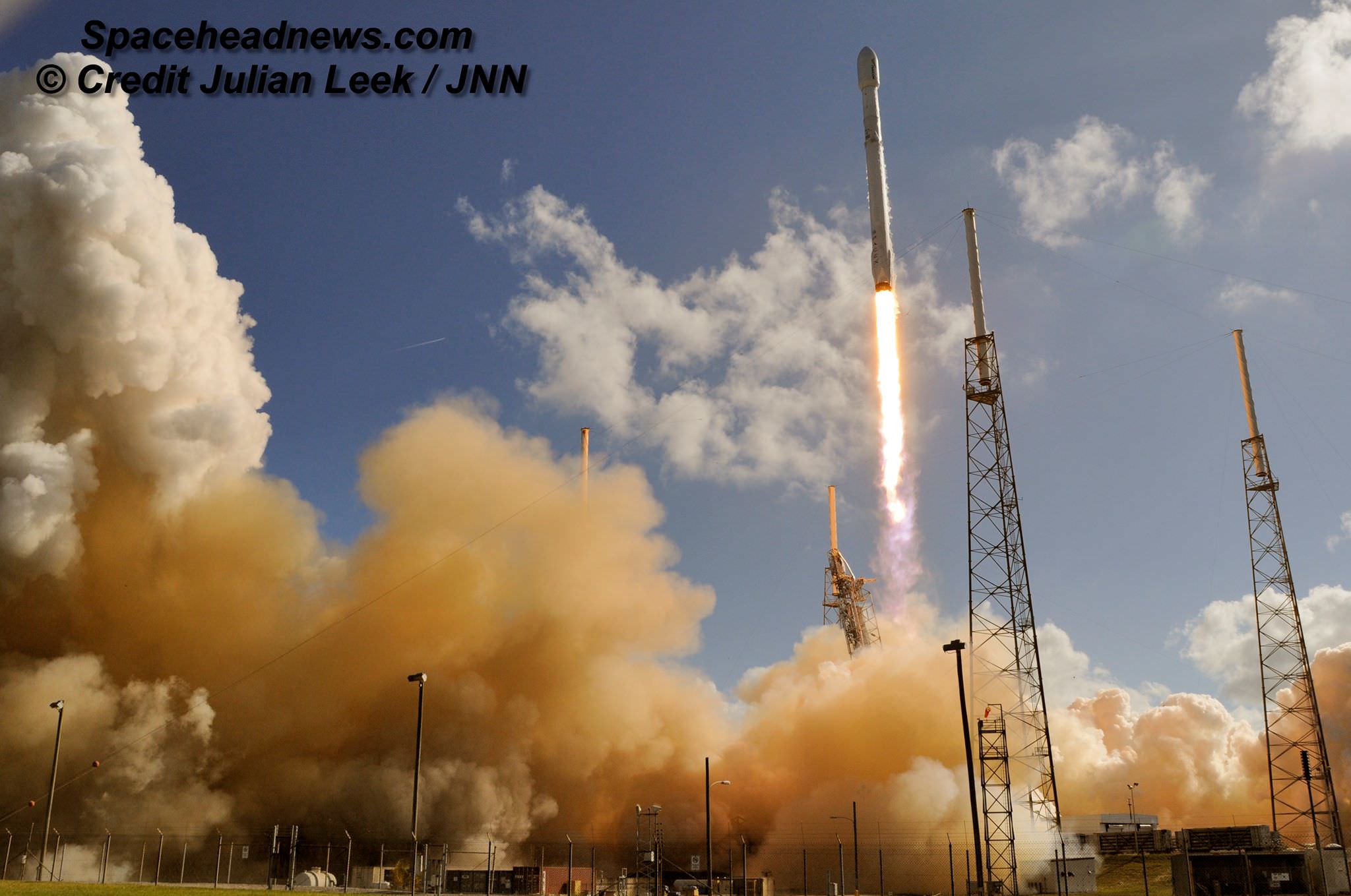
CAPE CANAVERAL AIR FORCE STATION, FL – Spectacular imagery showcasing SpaceX’s Thaicom blastoff on May 27 keeps rolling in as the firms newest sea landed booster sails merrily along back to its home port atop a ‘droneship’ landing platform.
Formally known as an Autonomous Spaceport Drone Ship (ASDS) the small flat platform is eclectically named “Of Course I Still Love You” or “OCISLY” by SpaceX Founder and CEO Elon Musk and is expected back at Port Canaveral this week.
Check out this expanding launch gallery of up close photos and videos captured by local space photojournalist colleagues and myself of Friday afternoons stunning SpaceX Falcon 9 liftoff.
The imagery shows Falcon roaring to life with 1.5 million pounds of thrust from the first stage Merlin 1 D engines and propelling a 7000 pound (3,100 kilograms) commercial Thai communications satellite to a Geostationary Transfer Orbit (GTO).
The recently upgraded Falcon 9 launched into sky blue sunshine state skies at 5:39 p.m. EDT from Space Launch Complex-40 at Cape Canaveral Air Force Station, FL, accelerating to orbital velocity and arcing eastward over the Atlantic Ocean towards the African continent and beyond.
Relive the launch via these exciting videos recorded around the pad 40 perimeter affording a “You Are There” perspective!
They show up close and wide angle views and audio recording the building crescendo of the nine mighty Merlin 1 D engines.
Video caption: Compilation of videos of SpaceX Falcon 9 launch of Thaicom 8 on 5/27/2016 from Pad 40 on CCAFS, FL as seen from multiple cameras ringing pad and media viewing site on AF base. Credit: Jeff Seibert
Watch from the ground level weeds and a zoomed in view of the umbilicals breaking away at the moment of liftoff.
Video caption: SpaceX Falcon 9 lifts off with Thaicom-8 communications satellite on May 27, 2016 at 5:39 p.m. EDT from Space Launch Complex 40 at Cape Canaveral Air Force Station, Fl, as seen in this up close video from Mobius remote camera positioned at pad. Credit: Ken Kremer/kenkremer.com
After the first and second stages separated as planned at about 2 minutes and 39 seconds after liftoff, the nosecone was deployed, separating into two halves at about T plus 3 minutes and 37 seconds.
Finally a pair of second stage firings delivered Thaicom-8 to orbit.
Onboard cameras captured all the exciting space action in real time.
When the Thai satellite was successfully deployed at T plus 31 minutes and 56 seconds exhuberant cheers instantly erupted from SpaceX mission control – as seen worldwide on the live webcast.
“Satellite deployed to 91,000 km apogee,” tweeted SpaceX CEO and founder Elon Musk.
Video caption: SpaceX – “Falcon In” “Falcon Out” – 05-27-2016 – Thaicom 8. The brand new SpaceX Falcon 9 for next launch comes thru main gate Cape Canaveral, just a few hours before Thaicom 8 launched and landed. Awesome ! Credit: USLaunchReport
Both stages of the 229-foot-tall (70-meter) Falcon 9 are fueled by liquid oxygen and RP-1 kerosene which burn in the Merlin engines.
Less than nine minutes after the crackling thunder and billowing plume of smoke and fire sent the Falcon 9 and Thaicom 8 telecommunications satellite skyward, the first stage booster successfully soft landed on a platform at sea.
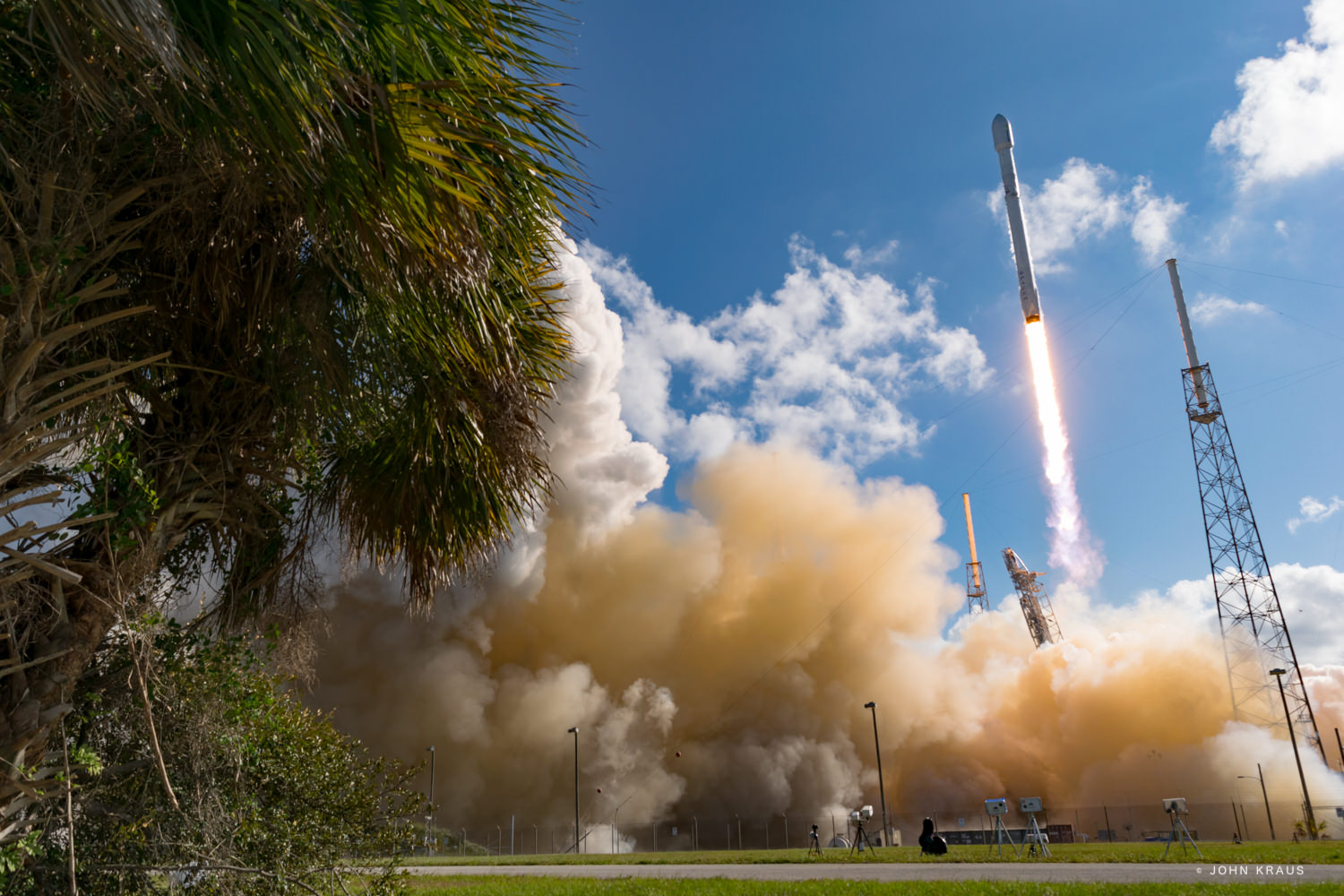
Having survived the utterly harsh and unforgiving rigors of demanding launch environments and a daring high velocity reentry, SpaceX engineers meticulously targeted the tiny ocean going ASDS vessel.
The diminutive ocean landing platform measures only about 170 ft × 300 ft (52 m × 91 m).
“Of Course I Still Love You” is named after a starship from a novel written by Iain M. Banks.
OCISLY was stationed approximately 420 miles (680 kilometers) off shore and east of Cape Canaveral, Florida surrounded by the vastness of the Atlantic Ocean.
Because the launch was target Thaicom-8 to GTO, the first stage was traveling at some 6000 kph at the time of separation from the second stage.
Thus the booster was subject to extreme velocities and re-entry heating and a successful landing would be extremely difficult – but not impossible.
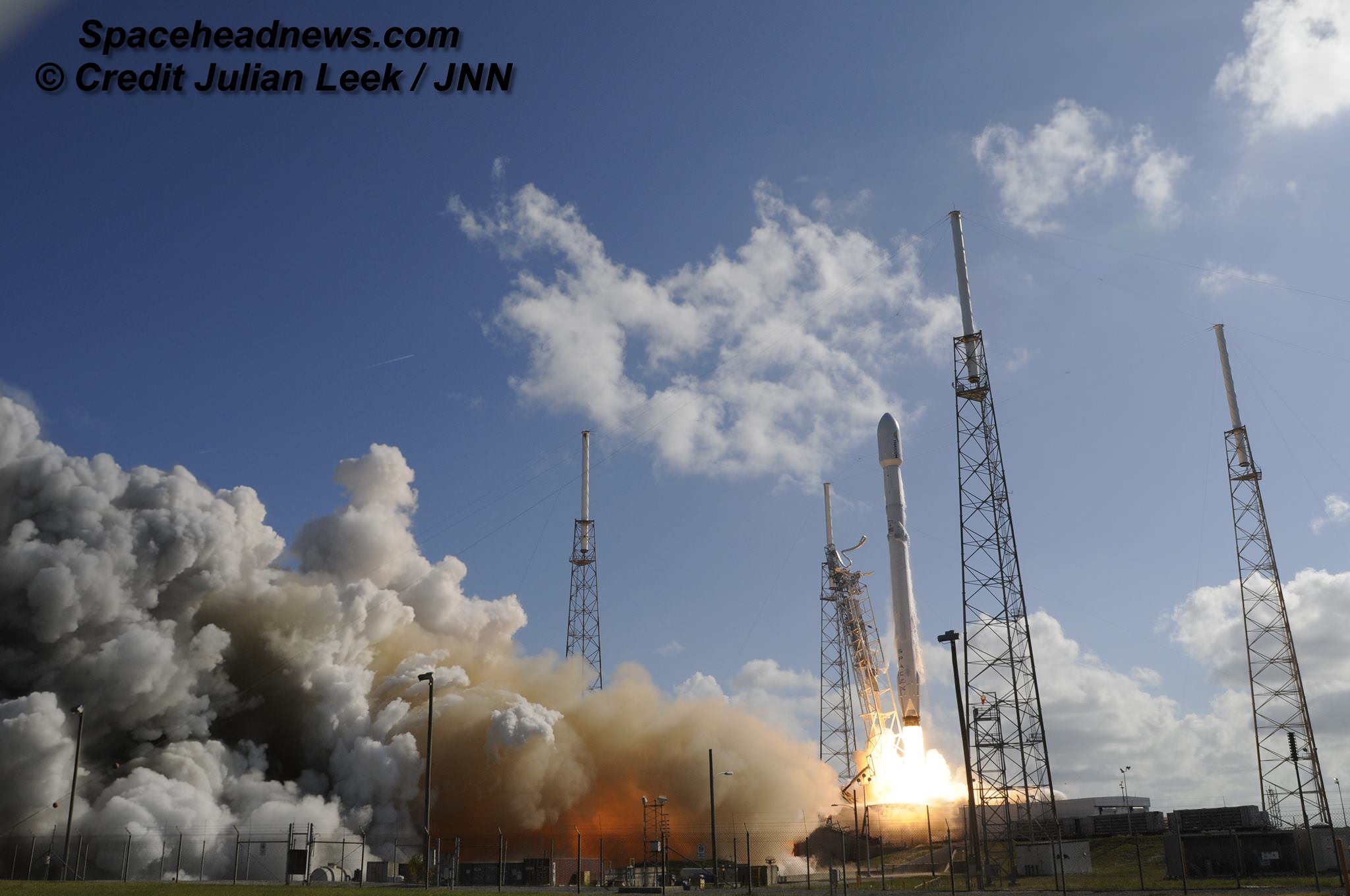
Just 3 weeks ago SpaceX accomplished the same sea landing feat from the same type trajectory following the launch of the Japanese JCSAT-14 on May 6.
The May 6 landing was the first fully successful sea landing from a GTO launch, brilliantly accomplished by SpaceX engineers.
With a total of 4 recovered boosters, SpaceX is laying the path to rocket reusability and Musk’s dream of slashing launch costs – by 30% initially and much much more down the road.
Thaicom-8 was built by aerospace competitor Orbital ATK, based in Dulles, VA. It will support Thailand’s growing broadcast industry and will provide broadcast and data services to customers in South Asia, Southeast Asia and Africa.
Thaicom-8 is the fifth operational satellite for Thaicom.
It now enters a 30-day testing phase, says Orbital ATK.
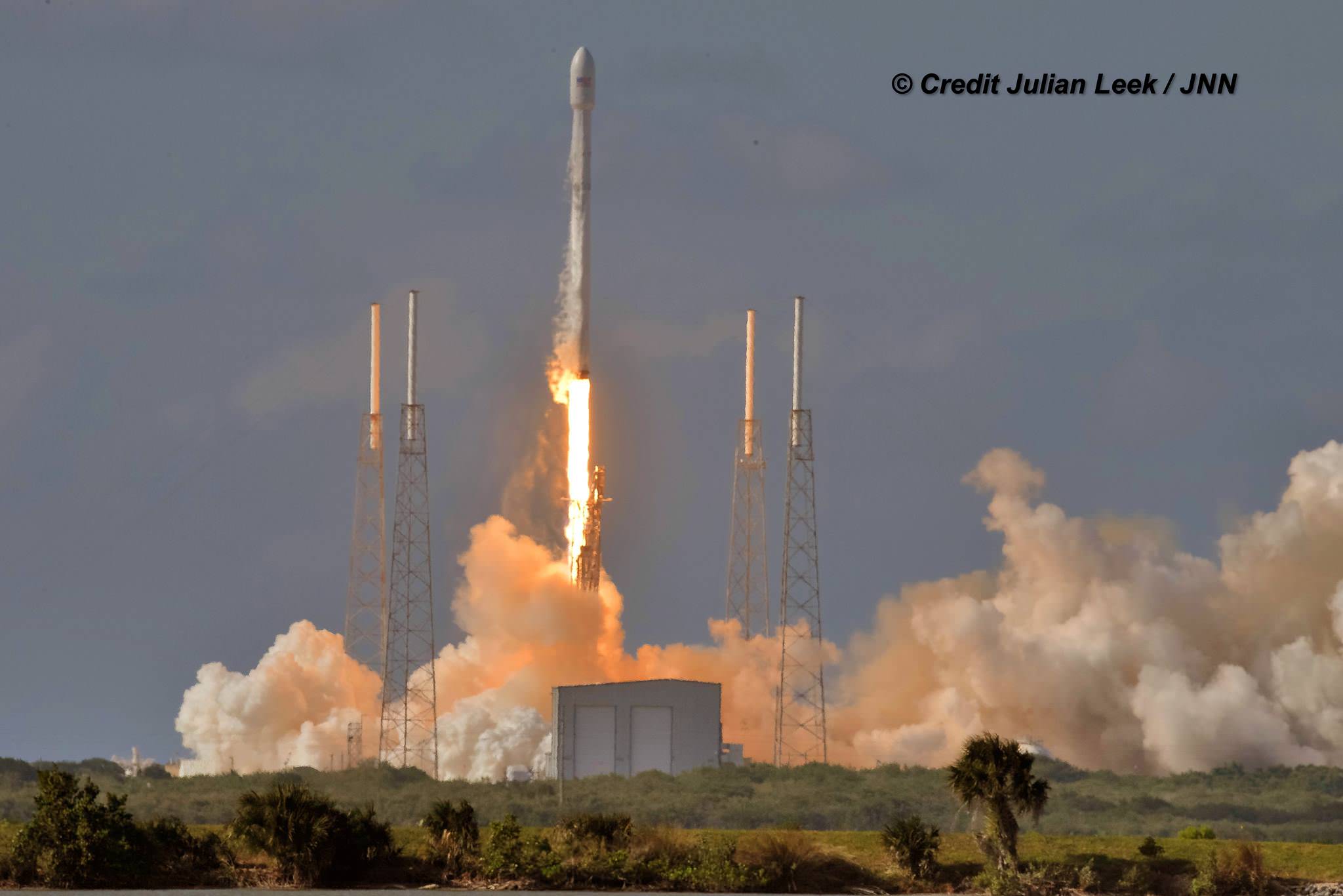
The Falcon 9 launch is the 5th this year for SpaceX.
Watch for Ken’s continuing on site reports direct from Cape Canaveral and the SpaceX launch pad.
Stay tuned here for Ken’s continuing Earth and planetary science and human spaceflight news.
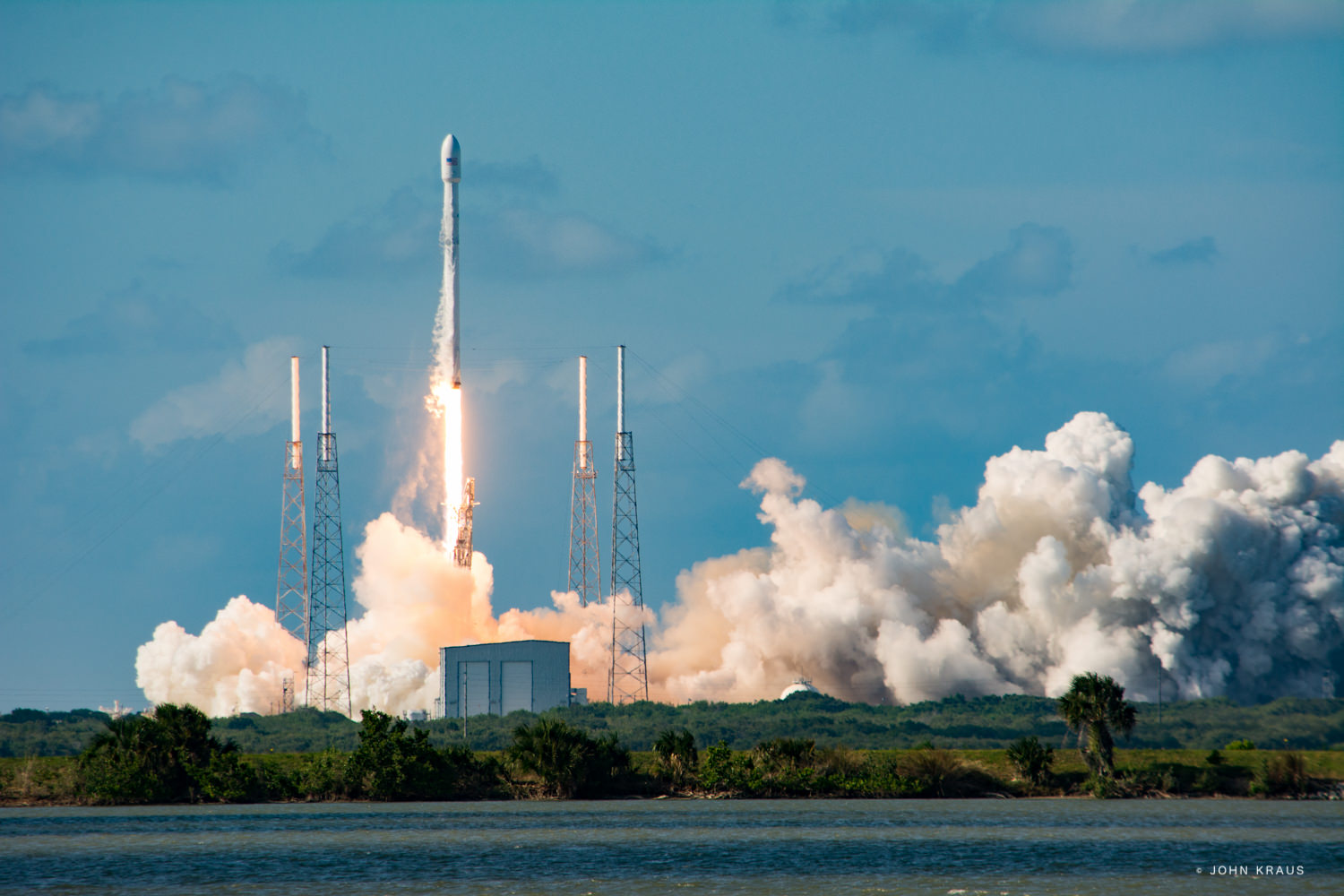
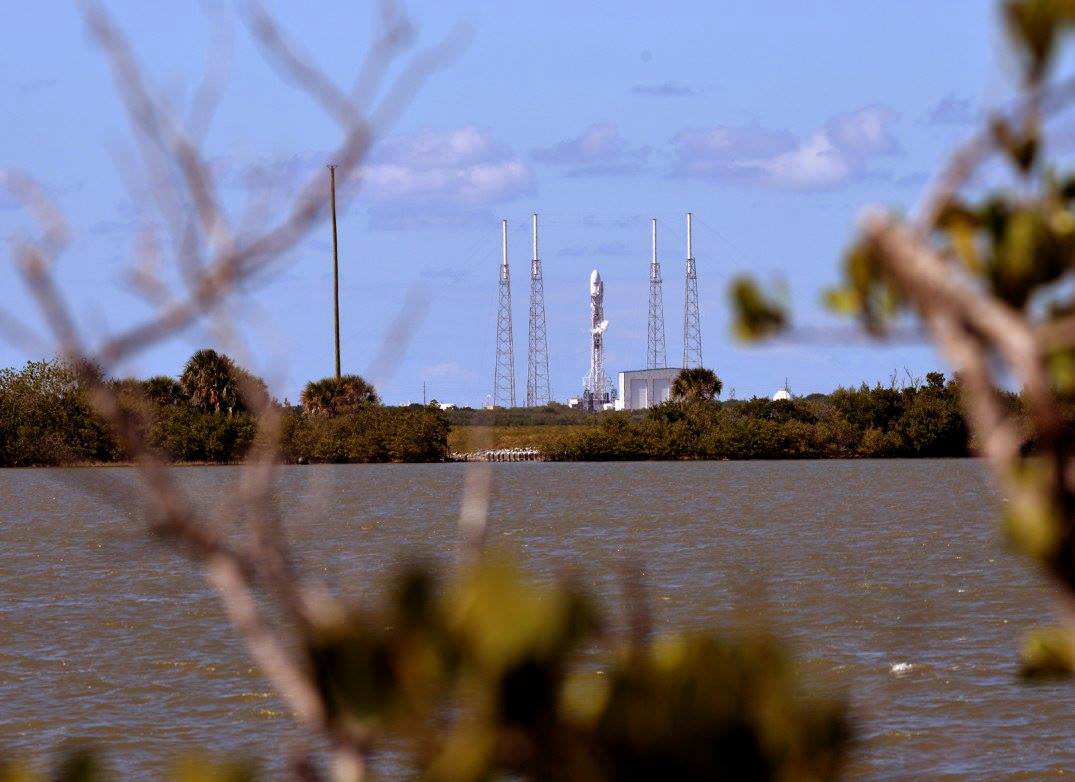
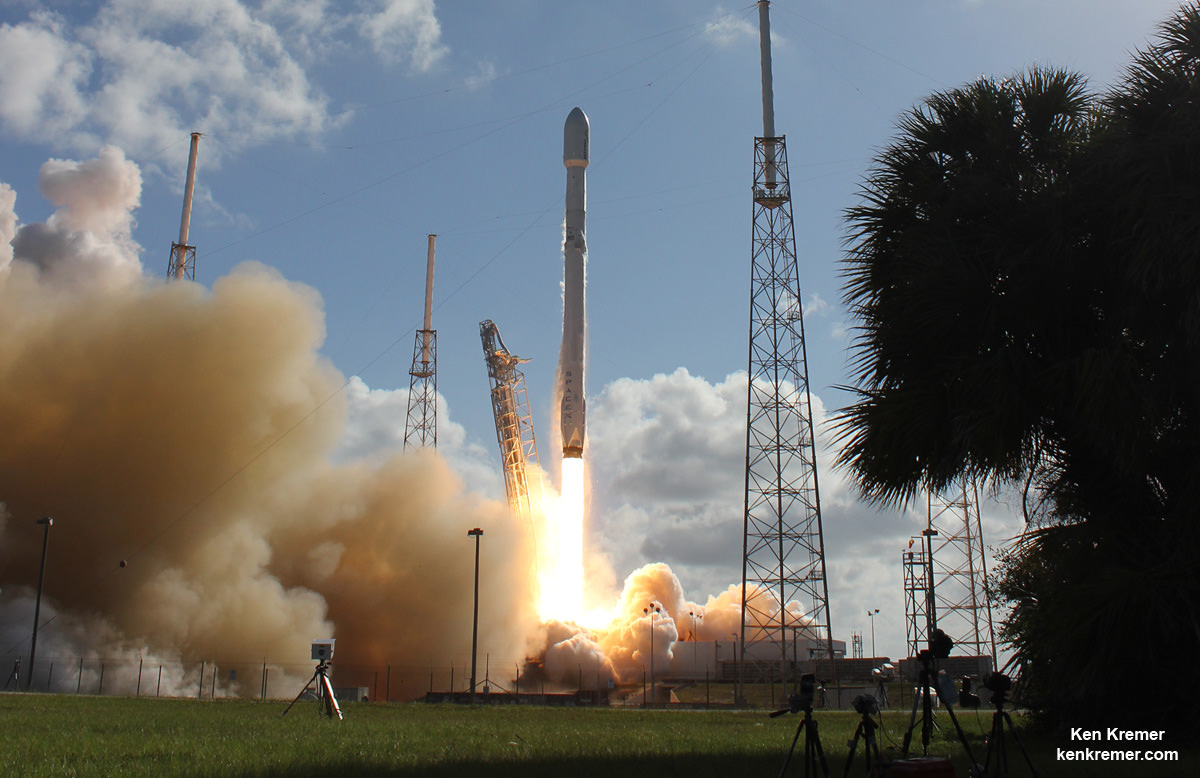
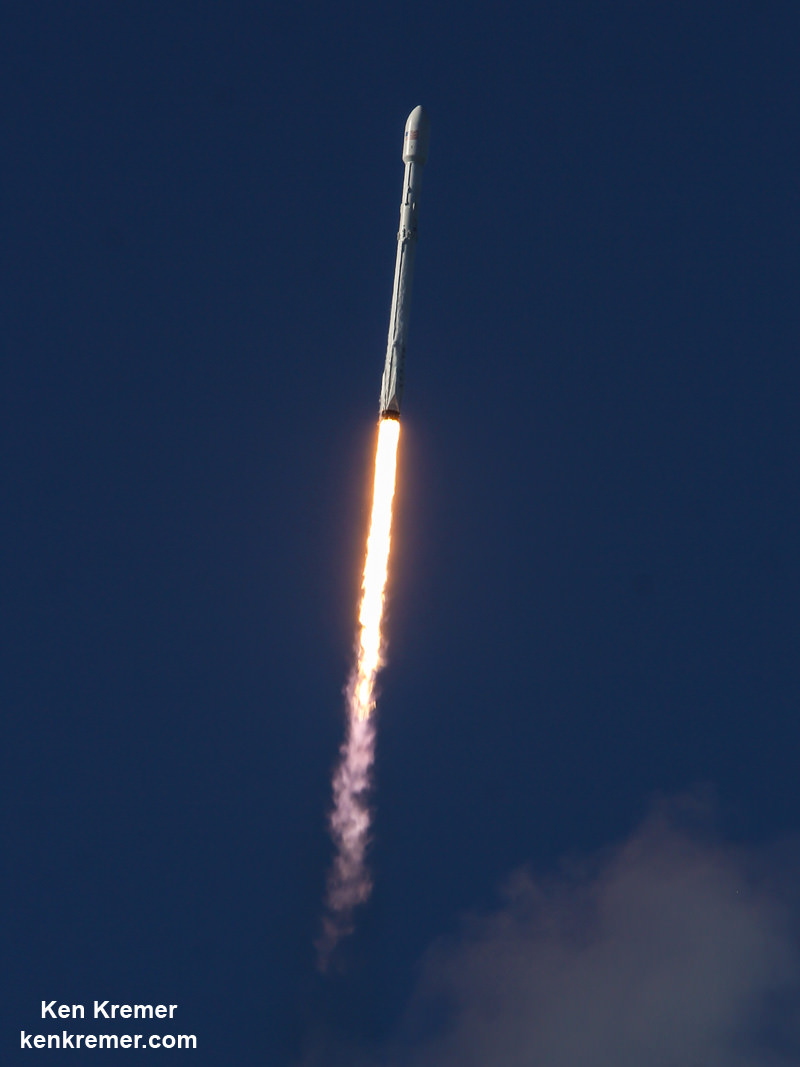
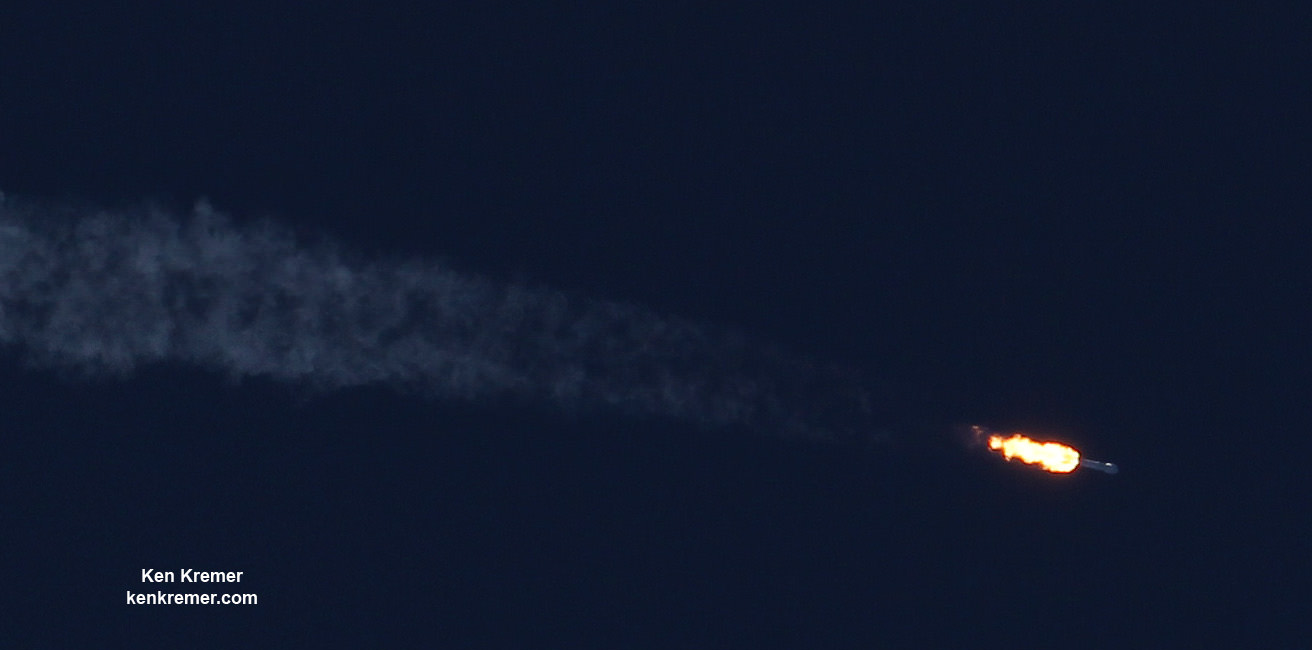
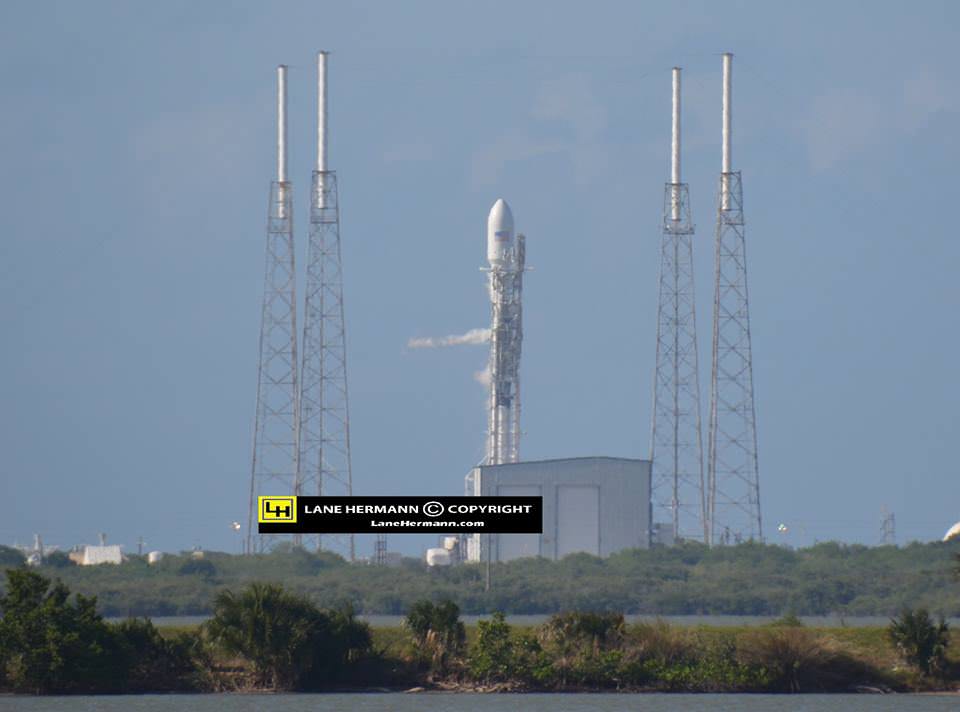
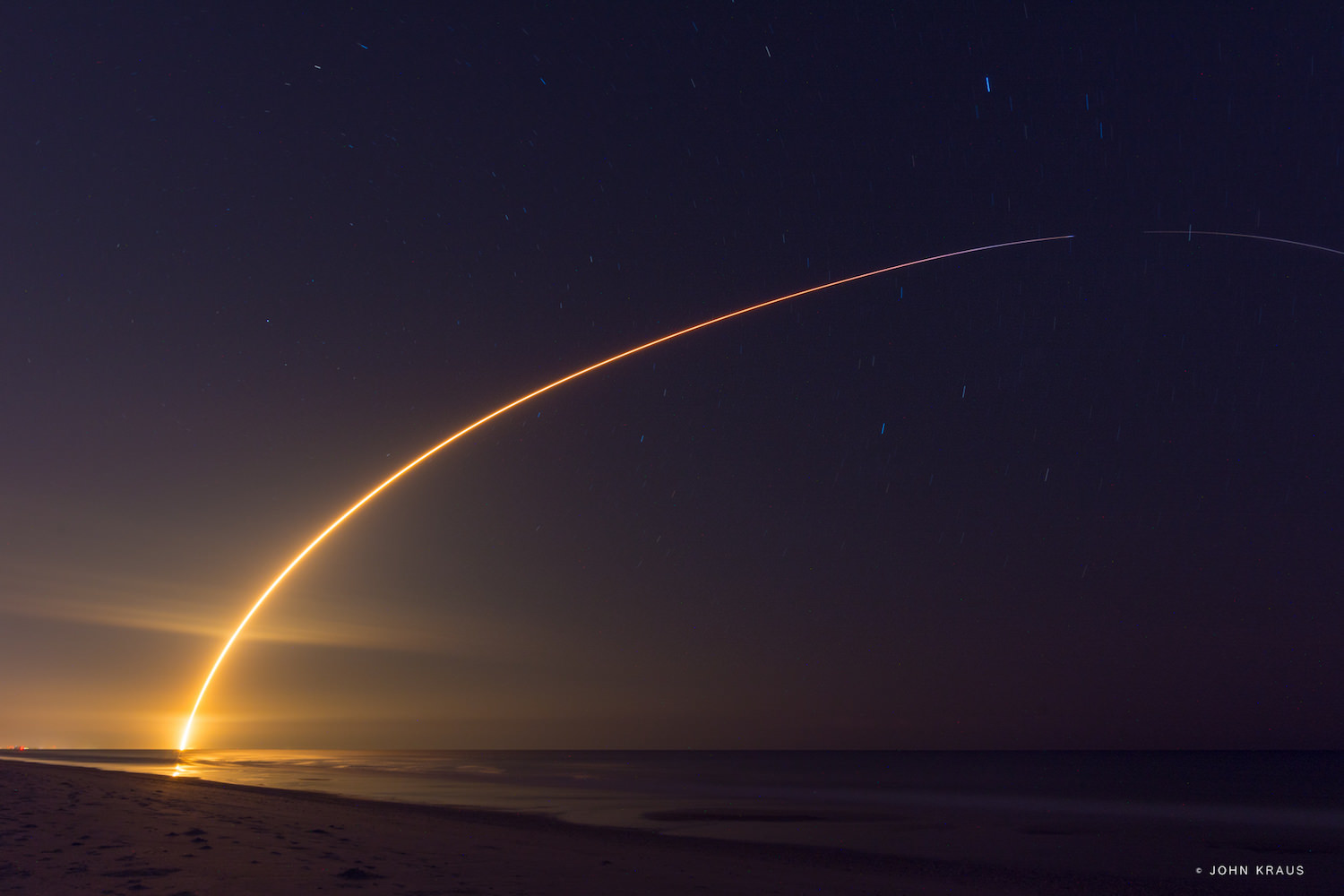

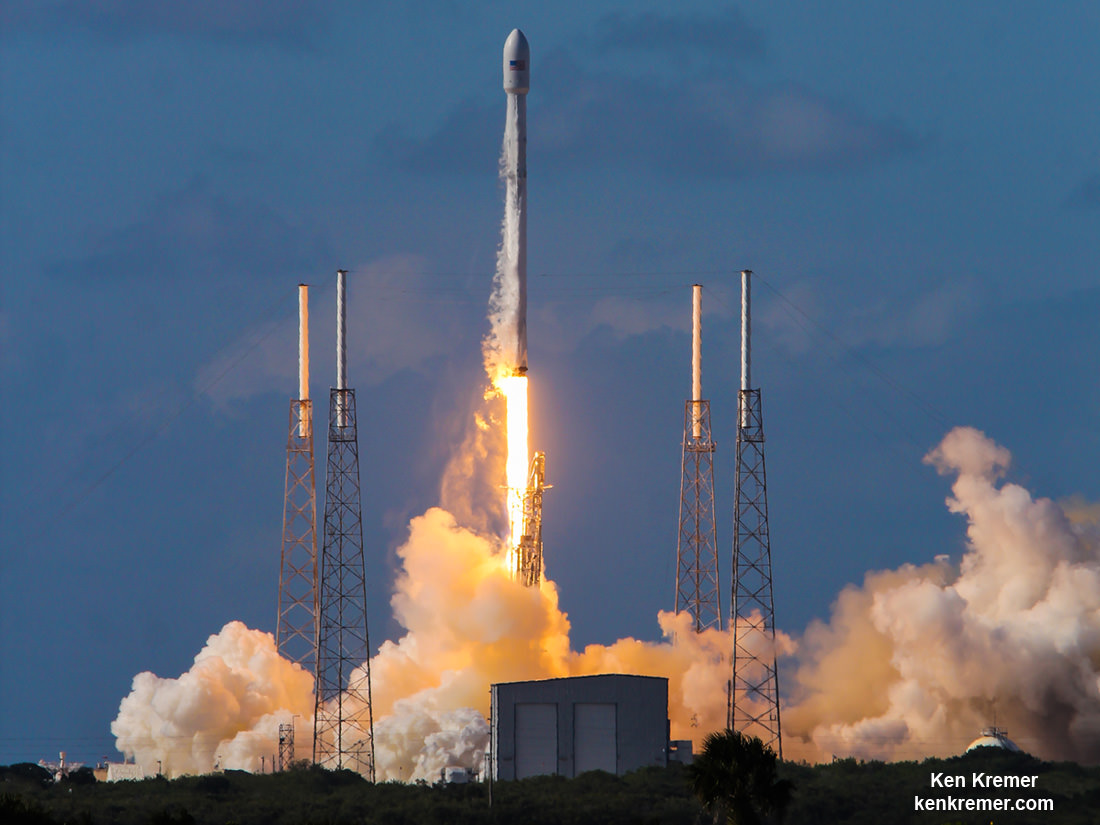

SpaceX Falcon 9 of Thaicom 8 on May 27, 2016 from Melbourne, FL. Credit: Melissa Bayles

SpaceX Falcon 9 of Thaicom 8 on May 27, 2016 from Melbourne, FL. Credit: Melissa Bayles

